 Sign in
Sign in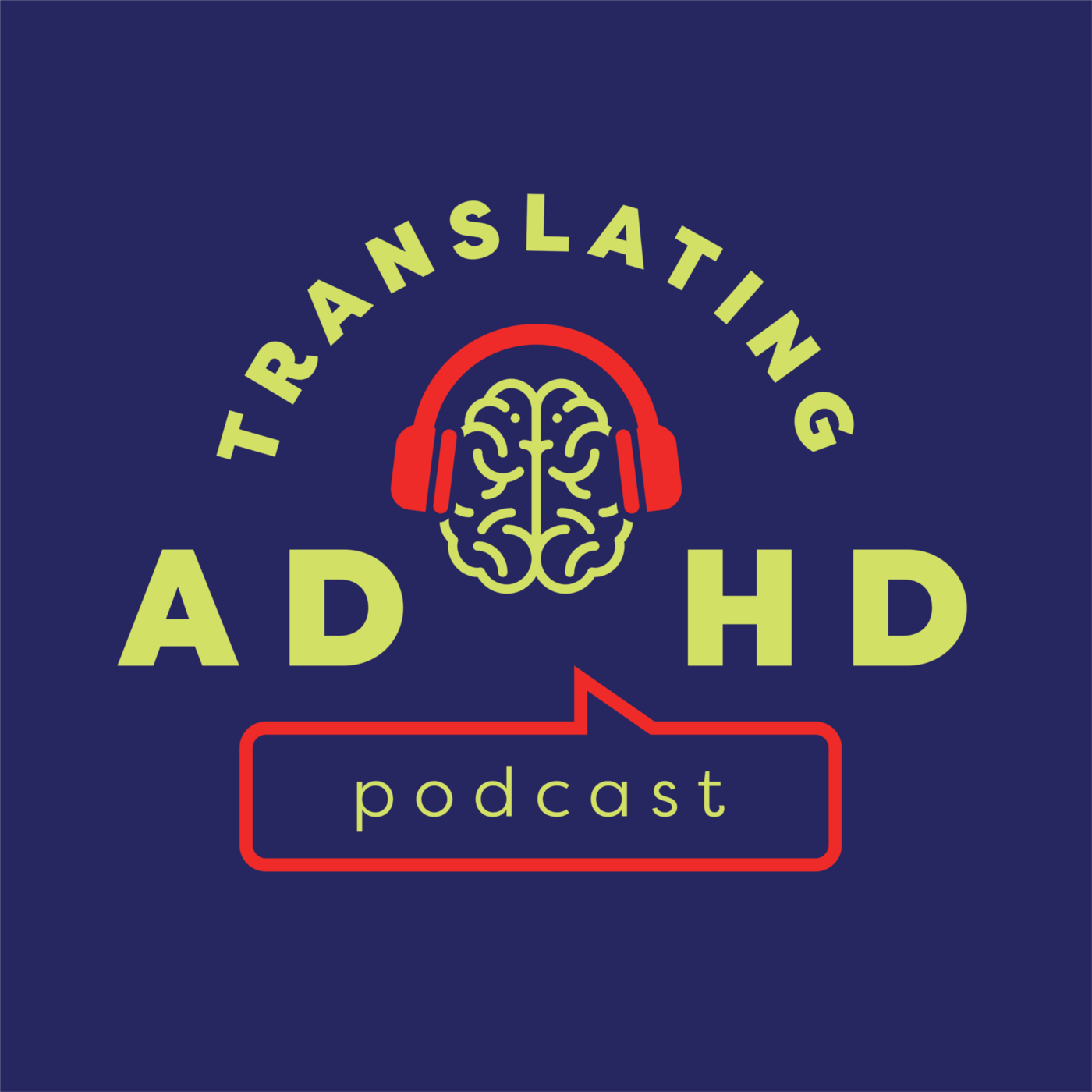
Education
Health & Fitness
Asher Collins and Dusty Chipura
We believe that success with ADHD is possible... with a little translation. Hosts Asher Collins and Dusty Chipura, both ADHD coaches who have plenty of insight to share navigating their own ADHD experiences, discuss how to live more authentically as an adult with ADHD and how to create real, sustained change to achieve greater success. If you are an adult with ADHD who wants more out of their business, career, and life, this is the podcast for you!
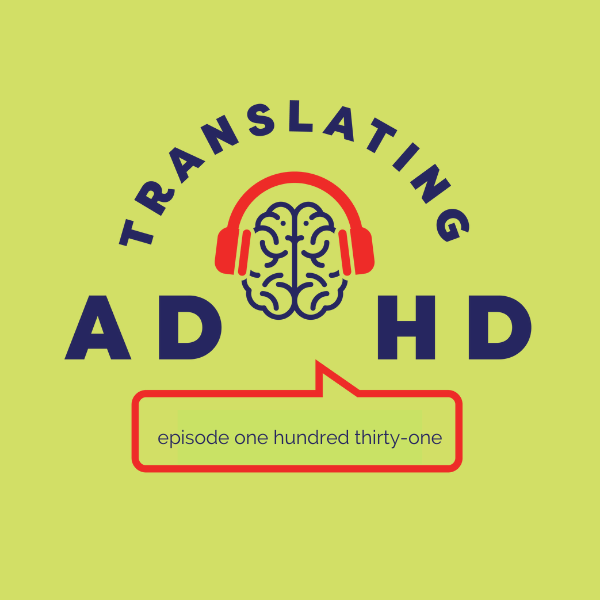
Habitual Responses to Time with ADHD
Last week Cam and Shelly talked about habitual emotional responses to the stories we tell ourselves. This week they explore habitual responses in the context of time. Those of us with ADHD can have a complicated relationship with time. We can be extremely reactive to it, and we can be highly avoidant of it.
Today the hosts share client examples of some classic habitual responses to time. Shelly and Cam reference the Eisenhower Decision Matrix tool that distinguishes importance and urgency in a task, especially Quadrant I items that are important and urgent and the ever-challenging Quadrant II items that are important and not urgent. With ADHD just ‘scheduling’ our important items in the future is not enough. We have to first address the propensity to be drawn to the biggest signals - lit up by urgency and our level of interest.
Shelly leads off with her own client example where her client struggled with scheduling the all-important case notes in her role as a special education teacher. As Shelly and her client start to look for the “big chunks” of time the client starts to shift her perspective, not only seeing the time but how the time would be valuable to address much more relevant tasks. In doing so, Shelly’s client noticed and shifted away from her habit of thinking she needed big chunks to finish her notes. Cam follows with an example where the client’s habitual response is to avoid undefined but less urgent tasks, pushing them to the next day on his calendar. These self-described “black boxes” were a source of underlying anxiety for Cam’s client. But when the client let go of not knowing and embracing a narrow role of just assessing and defining the task, he could overcome his avoidant behavior. In both examples, the clients got curious and present to the opportunity at hand. Cam and Shelly leave listeners with some simple practices to start identifying and shifting habitual responses to time.
Episode links + resources:
Join the Community | Become a Patron
Our Process: Understand, Own, Translate.
About Cam and Shelly
For more of the Translating ADHD podcast:
Episode Transcripts: visit TranslatingADHD.com and click on the episode
Follow us on Twitter: @TranslatingADHD
Visit the Website: TranslatingADHD.com
23:2206/06/2022
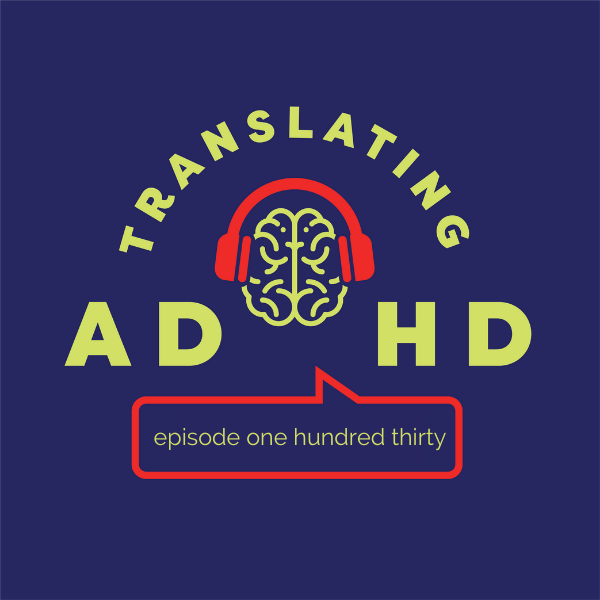
Emotions and Stories: Getting to What is Real with ADHD
As a part of our trusting my brain theme, Shelly and Cam explore two client scenarios to illustrate the difference between the stories we tell ourselves and our emotional responses to those stories. The emotions we feel at any time are very real and dictate how we move forward in both thought and action. Stories that we tell ourselves are both real and not necessarily real. They can be informed by a past traumatic event as illustrated in our first client scenario or they can be based in a false belief as illustrated in the second one.
ADHD makes it very difficult to distinguish what is real and what is conjecture. They share how the mindfulness practice of getting present and curious introduced in episode 129 can be used to explore stories aided by ADHD that can elevate or ratchet up the meaning of an event or belief and conversely stories that can downplay or dismiss a specific need. Developing a sense of agency in the face of strong emotions and the compelling stories we tell ourselves is possible with the right support.
Episode links + resources:
Join the Community | Become a Patron
Our Process: Understand, Own, Translate.
About Cam and Shelly
For more of the Translating ADHD podcast:
Episode Transcripts: visit TranslatingADHD.com and click on the episode
Follow us on Twitter: @TranslatingADHD
Visit the Website: TranslatingADHD.com
25:1530/05/2022
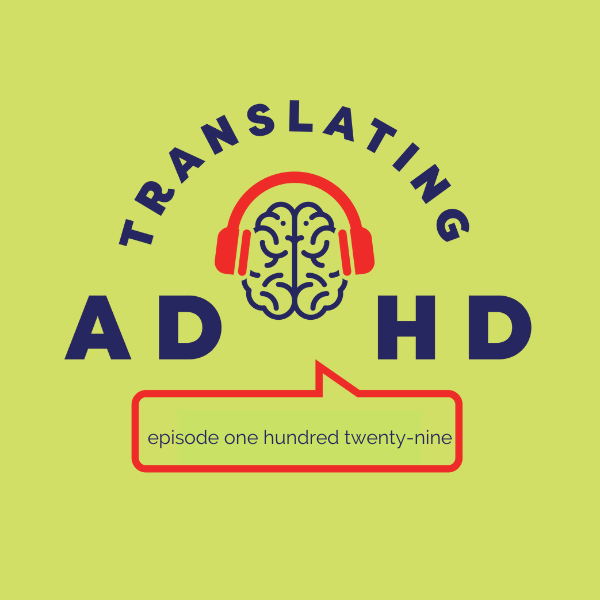
Mindfulness on My Own Terms with ADHD
There is a plethora of scientific data to support the effectiveness of mindfulness in managing one’s ADHD. Lydia Zylowska M.D. has done some excellent research to prove this. Yet many people with ADHD have mixed feelings about the practice, especially the frustration of not being able to do it ‘the right way’.
Cam and Shelly explore mindfulness in the context of orienting to the full impact of one’s experience. They discuss how mindfulness can be packaged like any other prescriptive offering with the off-putting instruction to “just start by sitting still and focusing on one thing…” Cam and Shelly break mindfulness down into its essential components of presence and curiosity and how both can be difficult to achieve with ADHD yet valuable in the process of overcoming the first barrier of awareness.
They discuss the benefits of informal practices of getting present and curious using body awareness techniques and exercises that provide beneficial context. Shelly shares how listeners can utilize our Pause, Disrupt, Pivot process to create space in the gap between stimulus and response. Finally, Cam shares how mindfulness can be helpful to reflect on a challenging experience to extract the learning to apply at some future time.
Episode links + resources:
Join the Community | Become a Patron
Our Process: Understand, Own, Translate.
About Cam and Shelly
For more of the Translating ADHD podcast:
Episode Transcripts: visit TranslatingADHD.com and click on the episode
Follow us on Twitter: @TranslatingADHD
Visit the Website: TranslatingADHD.com
22:5823/05/2022
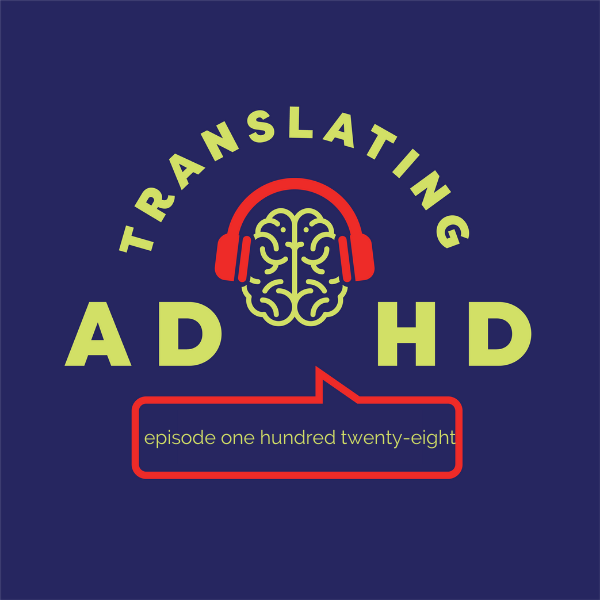
Orienting to the Full Impact of our Experience with ADHD
Inspired by the client story from episode 127, Shelly and Cam dig deeper into the common elements the client engaged with, in part through her coaching with Shelly, to create more space, start trusting her brain and regain her own power in a difficult relationship dynamic. Cam and Shelly discuss the concept of ‘full impact’ and how those of us with ADHD can struggle to see all that is happening in our experience. This echoes First Barrier dilemmas (Barrier to Awareness.) Cam draws in the four elements of emotional intelligence and how getting to awareness and then management with self (introspection/reflection) and our social environment (perception) can be fraught with misinformation and stories that make seeking the truth challenging. Distinguishing what is real and what is not real is an early step to creating the space for informed and empowered change.
Both Shelly and Cam discuss the power of one’s own context and how it relates to activating curiosity and creativity (Cam’s boat in a lake metaphor) and journey thinking (Shelly’s pond metaphor). They also discuss how detaching from outcome and discerning ‘Mine’ from ‘Ours’ can create a context or frame for a place to start seeing the full impact of our experience.
Episode links + resources:
Join the Community | Become a Patron
Our Process: Understand, Own, Translate.
About Cam and Shelly
For more of the Translating ADHD podcast:
Episode Transcripts: visit TranslatingADHD.com and click on the episode
Follow us on Twitter: @TranslatingADHD
Visit the Website: TranslatingADHD.com
22:2116/05/2022
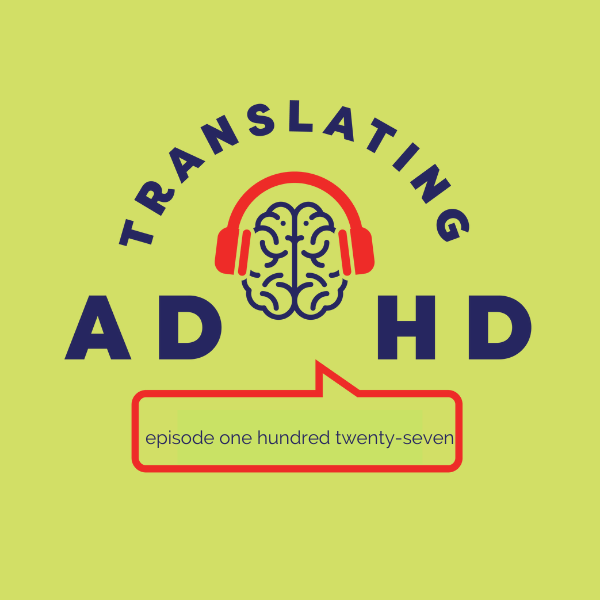
Trusting our Brain when the Relationship Turns Toxic
Shelly and Cam continue with the relationship thread and when we have to travel the ADHD path of discovery without the support of our partners. Today Shelly relays a client story where the real challenge was not related to ADHD at all, but how ADHD can make it difficult to trust our own brains. ADHD can distort our own sense of reality, our perception of time and our recollection of events. Add to that a toxic partnership, and getting clear on what is actually happening can be extremely challenging.
Shelly shares how she first reframed the coaching work to help the client ‘strengthen my position’ so she could trust her brain and get a better read on the situation - to buy time and work on her own stuff so she could make an informed decision about the larger relational problems. Client and coach worked to gather more accurate data, distinguish the challenges from the greater challenges of the relationship and establish some consistencies in self-care practice. Listen as the client moves from making excuses for her partner’s behavior and blaming herself to a stance of choice and agency. A fascinating story of reclaiming one’s power and trusting one’s brain.
Episode links + resources:
Join the Community | Become a Patron
Our Process: Understand, Own, Translate.
About Cam and Shelly
For more of the Translating ADHD podcast:
Episode Transcripts: visit TranslatingADHD.com and click on the episode
Follow us on Twitter: @TranslatingADHD
Visit the Website: TranslatingADHD.com
27:5909/05/2022
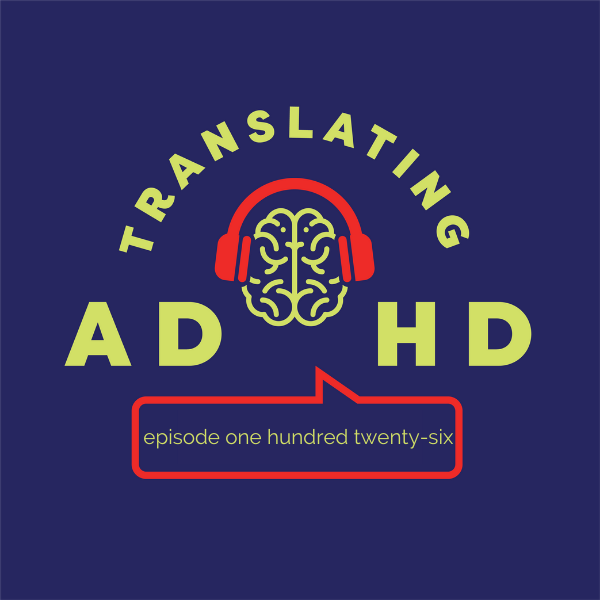
Ignorance: The Common Enemy of ADHD
It’s a very human behavior to look for an easy and convenient enemy when we struggle to move forward. We see it in our current political landscape and we see it in the world of ADHD management. When ADHD is discovered in a relationship it can become an easy scapegoat for the dynamic that is not working. On a broader scale, we can point to neurotypicals as the source of our neurodivergent woes and vice versa. In this episode, Shelly and Cam continue to discuss the challenge of exploring one’s ADHD when one doesn't have the support of their partner.
The true enemy to positive change is ignorance and a propensity for all parties to jump to assumptions about confusing behavior. ADHD is invisible and inconsistent in its presentation. Cam and Shelly talk about the need to create space to explore our own ADHD experience so we can ultimately get to a place of trusting our own brain. They talk about the importance of bringing curiosity and compassion into the mix to locate and clarify a common base of knowledge - how one is experiencing their ADHD and how it impacts the relationship. One example is the ADHD behavior of the defensive/dismissive one two punch.
Shelly shares an excellent story about her own relationship and what she and her partner did to overcome a challenge and move forward recognizing each other’s needs. Finally, Cam discusses the importance of locating a community that supports and challenges and does not just echo one’s deepest fears and assumptions.
Episode links + resources:
Join the Community | Become a Patron
Our Process: Understand, Own, Translate.
About Cam and Shelly
For more of the Translating ADHD podcast:
Episode Transcripts: visit TranslatingADHD.com and click on the episode
Follow us on Twitter: @TranslatingADHD
Visit the Website: TranslatingADHD.com
26:0702/05/2022
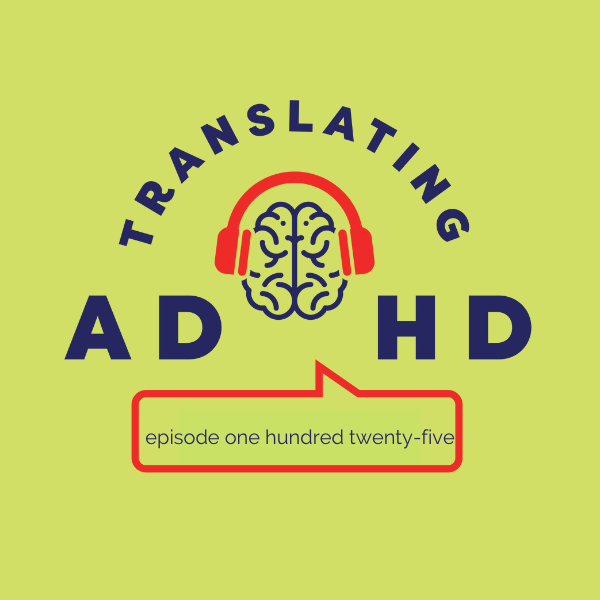
When your Partner isn’t Supporting your ADHD Journey
It’s really nice when a partner is supportive and understanding as you begin your own ADHD journey of discovery. But this is not always the case. This week Cam and Shelly discuss the not so uncommon scenario when we embark on our ADHD journey without the support of our primary relationship. Years of misinformation, fear and shame can build to where the non-ADHD partner throws up their hands and says “Enough!”. It's hard to play a game when everyone is playing Texas Hold’em and we are dealt a hand of Uno but this is the case often when we are struggling to understand our own ADHD experience and when we try to translate our experience to our partners. Frustration abounds!
Once ADHD is identified as a primary factor in the challenges of a relationship it can sometimes be identified as the sole dilemma. This is never the case in any relationship, yet anger, frustration and resentment build to a point where the non-ADHD partner withdraws support and vulnerability often with an ultimatum of “fix your ADHD!”. Our partners are not immune from making their own meaning and years of undiagnosed ADHD behavior - the missed events, the forgotten tasks - can build to a convincing story of “They must not care about me”.
The hosts introduce their BEANS acronym with a focus on safety, needs and agreements. A partner can’t support if their sense of safety has eroded too much. The invisibility and inconsistency of ADHD can create a sense of uncertainty and lack of safety in the relationship. Cam and Shelly discuss ways to proceed to start to dismantle the parent/child dynamic that so often happens. Shelly discusses how detaching from outcome and distinguishing ‘my stuff, their stuff, our stuff’ can be a place to start when the ADHD partner has to proceed by themselves. Ultimately through effective communication and setting independent expectations, the partners can reintroduce safety and start to rebuild trust, but there may be a moment when in fact we have to push ahead and go it alone for a spell.
Episode links + resources:
Join the Community | Become a Patron
Our Process: Understand, Own, Translate.
About Cam and Shelly
For more of the Translating ADHD podcast:
Episode Transcripts: visit TranslatingADHD.com and click on the episode
Follow us on Twitter: @TranslatingADHD
Visit the Website: TranslatingADHD.com
24:3325/04/2022
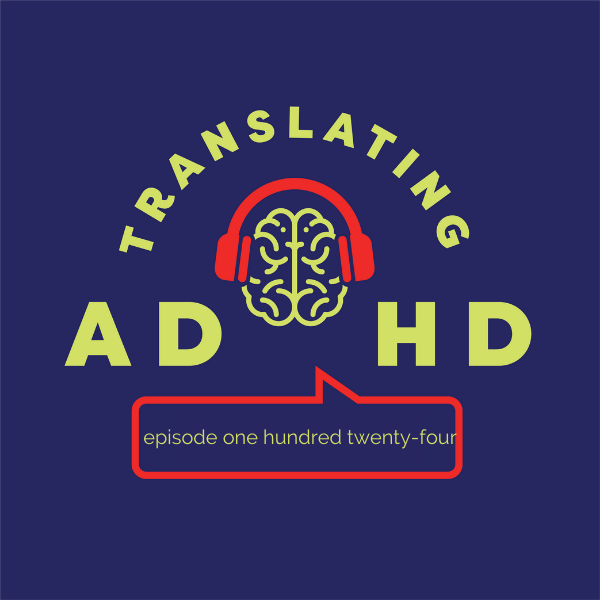
Creating Value Around Identity and Purpose with ADHD
Shelly and Cam continue exploring the significance and process of creating value and dig into creating value around purpose and identity this week. They refine their Sense, Access, Value model through deeper discussion, new client examples and sharing practices for listeners. Value lives between attention and motivation, and ADHD disrupts the valuation process by limiting accessibility and awareness (Barriers I and II from episodes 94 and 104). Getting clear on what you need or what really matters is key to determining agency and is also highly dependent on timing. We need this information to be accessible at the times we need it most. Unfortunately with ADHD, when swept up in a dramatic moment the things that are valuable to us like identities, practices and purpose can fade into the background.
Shelly shares a story about how a client thought they needed to be more like a gregarious but abrupt co-worker. In exploring this, Shelly and her client soon realized that the client was creating false value around the attributes of this “Politician” individual. Further exploration revealed a desire for more connectedness to the client’s own sense of self - a desire to collaborate. Shelly shares how at first she didn’t see herself in the picture when considering a really important relationship decision, but when she circled back to consider what truly matters she got crystal clear on her next steps. Cam and Shelly discuss the importance of a positive feedback loop and that with incomplete information we can create a false picture of success. Finally, they share how listeners can use Pause, Disrupt, Pivot in the larger Sense, Access, Value framework.
Episode links + resources:
Join the Community | Become a Patron
Our Process: Understand, Own, Translate.
About Cam and Shelly
For more of the Translating ADHD podcast:
Episode Transcripts: visit TranslatingADHD.com and click on the episode
Follow us on Twitter: @TranslatingADHD
Visit the Website: TranslatingADHD.com
30:0318/04/2022
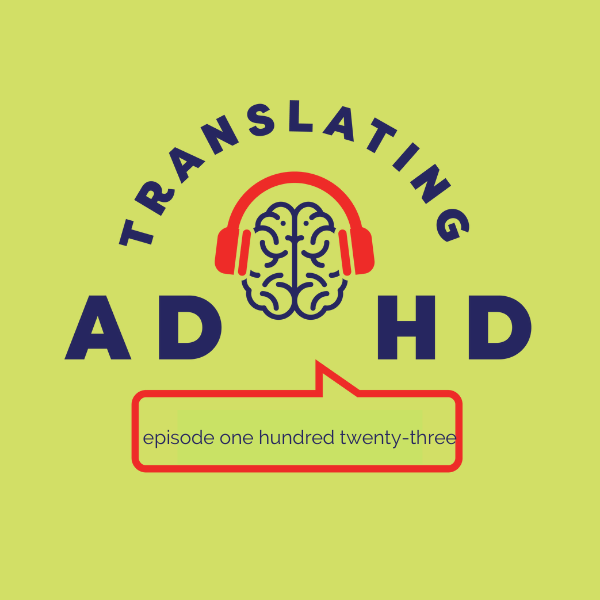
The Valuation of Time and Emotion with ADHD
Cam and Shelly go Big-Brain this week tinkering with the very structural elements of their Mt. Rainier Model (episodes 60-63). They introduce a concept not often considered in conventional ADHD conversations - language that often includes terms like interest, regulation, management and attention. The term introduced this week is valuation, and valuation matters because it lives between attention and motivation. Valuation is simply the amount of value we place on something. Cam argues that those of us with ADHD struggle to see the value of something because of the disruptive nature of ADHD. You can’t value what you can’t access. You can’t access what you can’t sense. ADHD impacts our ability to both sense and access concepts like time and emotion.
Cam shares client examples that turn conventional wisdom on its head. Stories of clients challenging conventional takes on concepts like time and emotion. These clients are not just settling for management or regulation. These stories are forcing Cam to rethink the Rainier Cause and Effect model.
Finally, Cam and Shelly share a new process similar to Pause, Disrupt and Pivot. The new process is Sense, Access, Value. Cam and Shelly are just at the beginning with exploring this concept of valuation.
Episode links + resources:
Join the Community | Become a Patron
Our Process: Understand, Own, Translate.
About Cam and Shelly
For more of the Translating ADHD podcast:
Episode Transcripts: visit TranslatingADHD.com and click on the episode
Follow us on Twitter: @TranslatingADHD
Visit the Website: TranslatingADHD.com
28:0511/04/2022
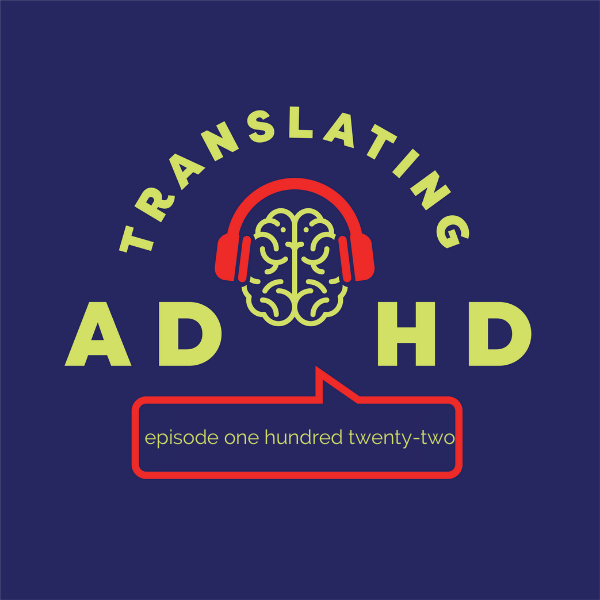
Evoking Awareness as a Practice with ADHD
Hosts Shelly and Cam continue on the theme of practice and look at evoking awareness. Evoking Awareness is actually an important coaching competency and is key to the coaching process. Within this category is the all-important aspect of self-knowledge - personal values and strengths, challenges and needs, best practices, and what we like to call the client’s worldview. Also remember that awareness is one of the three barriers of ADHD. It can be hard to create new awareness and keep that awareness once we have it. Today Shelly and Cam discuss practices beyond coaching that can help evoke awareness and build self-knowledge.
Shelly shares a surprising practice of tarot card reading and how it helps her to consider questions in a larger context. Cam shares how inspiration practices help him evoke awareness. The hosts emphasize that the actual tool or practice is secondary to what the practice encourages - curiosity in a specific context. Those of us with ADHD can struggle with overwhelm and with orienting to opportunities and questions worth considering. A good tool is like coaching. It provides a contextual prompt to explore an area with curiosity to evoke new awareness.
Episode links + resources:
Join the Community | Become a Patron
Our Process: Understand, Own, Translate.
About Cam and Shelly
For more of the Translating ADHD podcast:
Episode Transcripts: visit TranslatingADHD.com and click on the episode
Follow us on Twitter: @TranslatingADHD
Visit the Website: TranslatingADHD.com
25:3004/04/2022
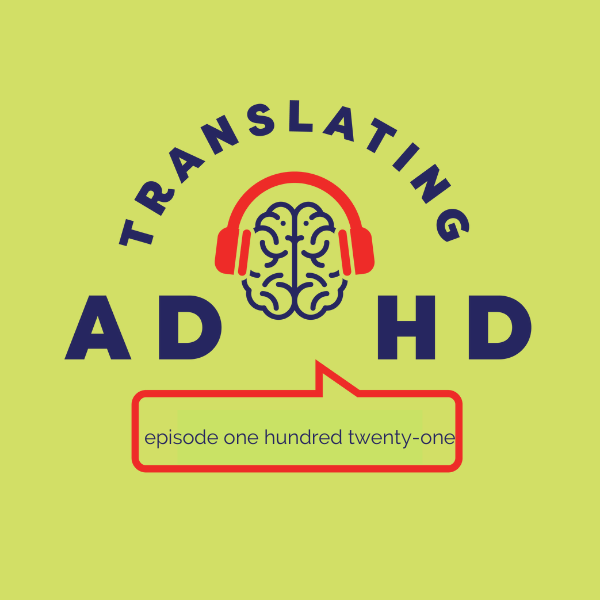
Cultivating a Self-Care Practice with ADHD
Shelly and Cam discuss the significance of cultivating a self-care practice in this episode and start with distinguishing “should” activities and activities that “fill you up”.They first introduced self-care as a topic back in episode 95. In this episode, they look at self-care through the lens of cultivating a practice. Self-care is something both Shelly and Cam introduce to their ADHD coaching clients because it is the perfect vehicle to identify core values, key needs and practice making space for something that only matters to the client. ADHD can make it very difficult to identify and practice key self-care practices.
Shelly shares her own experience in coaching with Cam and the barrier to honoring and practicing her own self-care practices of attending live concerts. She talks about the brain soothing benefits of practicing self-care activities that really matter to the individual. Cam and Shelly identify barriers to developing new self-care practices, both limiting mindsets and avoidant behaviors that get in the way.
Finally, Cam and Shelly discuss client examples of how three similar activities, like running, are tethering to very different motivators for each client. Shelly and Cam leave listeners with first steps for cultivating a self-care practice.
Episode links + resources:
Join the Community | Become a Patron
Our Process: Understand, Own, Translate.
About Cam and Shelly
For more of the Translating ADHD podcast:
Episode Transcripts: visit TranslatingADHD.com and click on the episode
Follow us on Twitter: @TranslatingADHD
Visit the Website: TranslatingADHD.com
26:4228/03/2022
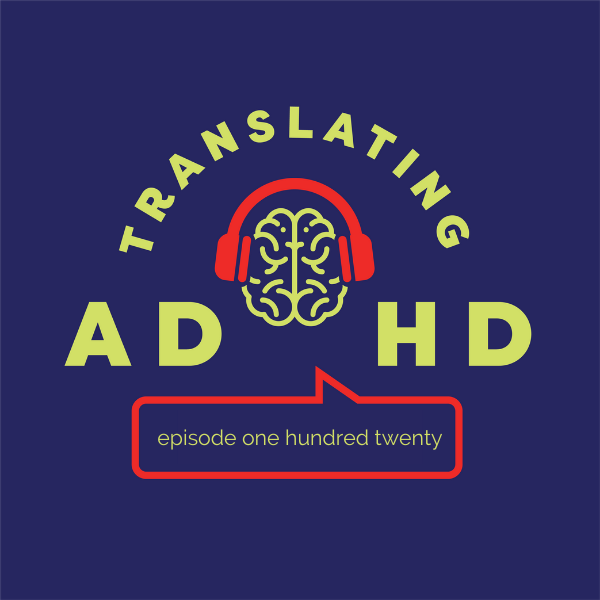
Anchoring as a Practice with ADHD
Shelly and Cam explore anchoring as a practice this week. With the three barriers of awareness, action and learning, those of us with ADHD can lose touch with tried and true knowledge and proven practices. Seeing ourselves in the picture matters, but over time the picture can fade. Anchoring to what we know to be true is a proven practice to keep us tethered to our best practices and keeps us front and center in the picture. With ADHD we can set down knowledge and practices like setting down a set of keys. Eventually the keys become relevant when we need to drive somewhere. The irony here is that we can lose the awareness of the need or value of a practice or a nugget of relevant information. Literally out of sight, out of mind.
Shelly and Cam discuss how the pause from pause, disrupt, pivot is an opportunity to introduce an anchor practice. Shelly shares a client story where her client realizes how smelling a candle triggers a connection to a value of lightness and humor. Anchoring to what we know to be true opens us to living more authentically and within our values and strengths. The hosts leave the listener with an exercise to develop awareness around the practice of anchoring.
Episode links + resources:
Join the Community | Become a Patron
Our Process: Understand, Own, Translate.
About Cam and Shelly
For more of the Translating ADHD podcast:
Episode Transcripts: visit TranslatingADHD.com and click on the episode
Follow us on Twitter: @TranslatingADHD
Visit the Website: TranslatingADHD.com
27:1121/03/2022
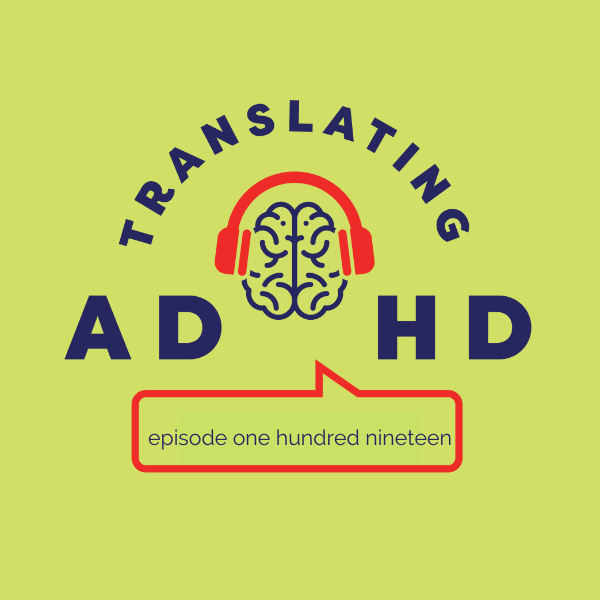
Cultivating a Metaphor Practice with ADHD
Continuing with the theme of cultivating a practice, Shelly and Cam discuss the practice of working with metaphors. Some of us, like Shelly, make meaning through language. Others, like Cam, make meaning through imagery, metaphor and analogy. Shelly and Cam explore the power of metaphor by looking at Cam’s own progression of metaphor use - as a daydream escape in his early years, to weaponizing imagery to reinforce his own imposter syndrome to finally turn it into a constructive coaching tool.
Cam relays the story of how he used imagery to articulate his own ADHD experience, namely the difficulty of finishing any project. He shares metaphors of snow plows with ever-expanding blades to a version of the Odyssey where Odysseus fights the Cyclops a hundred times. In putting imagery to his ADHD experience, Cam was able to start to understand his specific challenges and start to create the change he wanted to have happen. Both Cam and Shelly discuss how coaches use metaphor with clients to create understanding and an opening for change.
Episode links + resources:
Join the Community | Become a Patron
Our Process: Understand, Own, Translate.
About Cam and Shelly
For more of the Translating ADHD podcast:
Episode Transcripts: visit TranslatingADHD.com and click on the episode
Follow us on Twitter: @TranslatingADHD
Visit the Website: TranslatingADHD.com
28:0414/03/2022
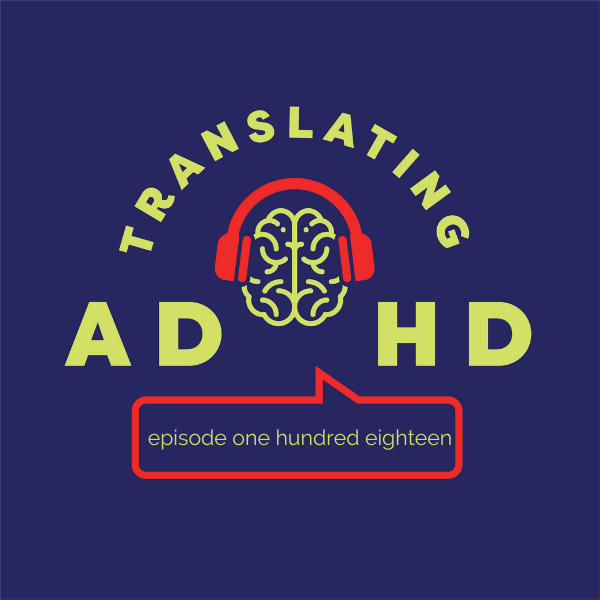
Cultivating a Practice of Articulation with ADHD
Continuing with the theme of cultivating a practice, Shelly and Cam discuss the practice of articulation - giving language to our ADHD experiences, and to our thoughts and feelings. Articulation is a universally beneficial practice, meaning that everyone can benefit from this practice regardless of modality preference. Articulation is a key component of coaching and helps to break down the barriers of awareness and learning (from the Three Barriers of ADHD).
ADHD, with its related verbal working memory/EF challenges, makes it difficult to put words to an experience. In coaching, we create a safe space for a client to explore their ADHD experience with new meaning. Articulation is a part of a reflective practice, to pause and reflect on an experience and extract the learning to take forward. Cam and Shelly describe this practice as a dance and lay out some of the basic dance steps to get started. They introduce a concept of positive accountability and they share examples of how articulation can be beneficial on either side of an action or activity, discussing how this practice can be done outside the realm of a coaching relationship.
Episode links + resources:
Join the Community | Become a Patron
Our Process: Understand, Own, Translate.
About Cam and Shelly
For more of the Translating ADHD podcast:
Episode Transcripts: visit TranslatingADHD.com and click on the episode
Follow us on Twitter: @TranslatingADHD
Visit the Website: TranslatingADHD.com
32:0707/03/2022
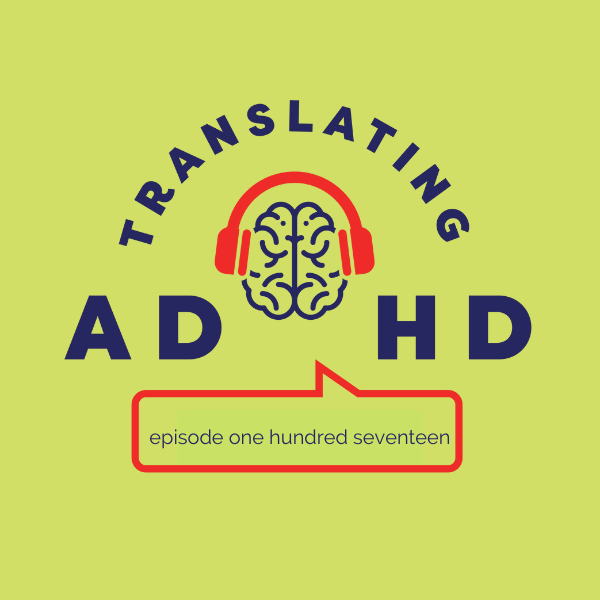
Bigger Perspective Work with ADHD: A Client Scenario
Shelly and Cam continue in the vein of cultivating a practice and perspectives, looking at deeper perspective work over a longer period of time. People change and grow. The worlds and realities they create and live in change too. It only makes sense that their thinking evolves with that change. This is at the root of perspective - how we look at a situation is just as relevant and informing as the actual situation. There is a plethora of scientific data that supports how exploring mindset can better inform one’s experience.
Shelly brings a client example of perspective work over the span of a coaching session illustrating how perspectives can serve us in one period of our lives but no longer serve us as our situation changes and evolves. Shelly’s client shares how her “Solutions Focused” perspective served her well early in her sustainability initiative but then became more of an impediment as her situation changed. Shelly shares the relevance of a practice of incremental change and how we can generate evidence from our experiences to inform our mindset. The practice of Pause Disrupt Pivot is discussed as is a reflective practice. Individuals with ADHD with our ‘mode preference’ behavior can lock into a specific mindset missing an opportunity to take a step back and consider a better way to see a situation. A program note: This is not about just thinking positive AKA toxic positivity, it's about seeing oneself in their picture to create agency and empower change.
Episode links + resources:
Join the Community | Become a Patron
Our Process: Understand, Own, Translate.
About Cam and Shelly
For more of the Translating ADHD podcast:
Episode Transcripts: visit TranslatingADHD.com and click on the episode
Follow us on Twitter: @TranslatingADHD
Visit the Website: TranslatingADHD.com
30:4128/02/2022
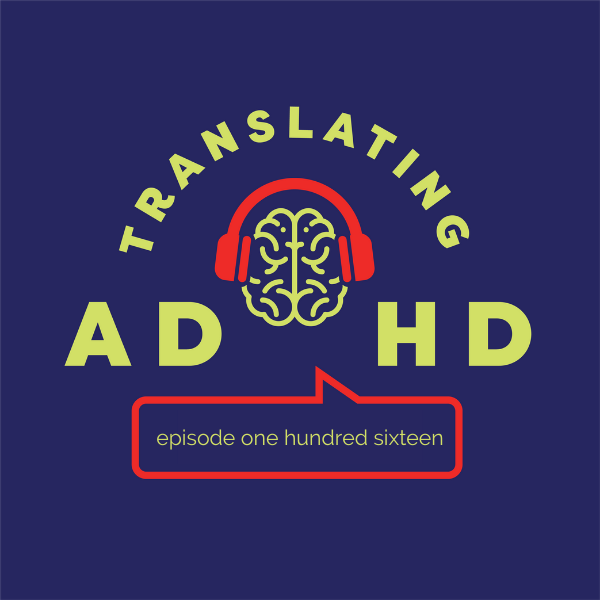
Cultivating a Practice: Perspective Shifts and ADHD
Cam and Shelly step into their first deep dive into the greater cultivating a practice theme with an exploration of perspective work, a core element of ADHD coaching. When one thinks of cultivating a practice one can think of an action or a strategy and how to step into a task or behavior. With ADHD it is also important to develop a practice or habit of stepping back from a situation or experience.
Stepping back is a reflective practice and allows us to view how we are looking at a dilemma or a situation. How we are looking at a situation is as important if not more important than the actual situation. Are you looking at something from a One Down perspective? A place of shame or fear? What is it to view it as an equal? To view it from a core value?
This is perspective work and perspectives matter because they are ultimately tied to motivation and seeing oneself in the picture. Shelly shares one of her first coaching sessions where she experienced a client’s perspective shift around time. Perspective shifts are about awareness in a different way and Shelly as her younger coach was amazed at how the client shifted her thinking around a recurring dilemma which then motivated her to address the problem proactively. Shelly pulls in our pause, disrupt, pivot process and how it can help with perspective shifts and also suggests listeners to focus in one small area of their lives with their practice here.
Episode links + resources:
Join the Community | Become a Patron
Our Process: Understand, Own, Translate.
About Cam and Shelly
For more of the Translating ADHD podcast:
Episode Transcripts: visit TranslatingADHD.com and click on the episode
Follow us on Twitter: @TranslatingADHD
Visit the Website: TranslatingADHD.com
31:1321/02/2022

Cultivating a Practice with ADHD
Hosts Shelly Collins and Cameron Gott pivot away from their exploration of emotions and emotional dysregulation and introduce a central coaching element - Cultivating a Practice. They lay out general concepts of developing a practice, distinguishing universal practices from more selective individual practices. Cam and Shelly introduce the idea of a practice mindset and discuss how perspective work in coaching is a good place to start when wanting to introduce a new practice.
Cam and Shelly integrate their Pause, Disrupt, Pivot model and share stories about how their own clients develop a practice of first shifting their thinking prior to creating downstream change and agency. Cam shares a theater metaphor as a way to get perspective or distance on a feeling or a narrative. Like locking into an emotional mode, those with ADHD can lock into a familiar narrative or story that then influences outcomes. Finally, Shelly shares a few of the upcoming topics including mantras or affirmations.
Episode links + resources:
Join the Community | Become a Patron
Our Process: Understand, Own, Translate.
About Cam and Shelly
For more of the Translating ADHD podcast:
Episode Transcripts: visit TranslatingADHD.com and click on the episode
Follow us on Twitter: @TranslatingADHD
Visit the Website: TranslatingADHD.com
34:3614/02/2022
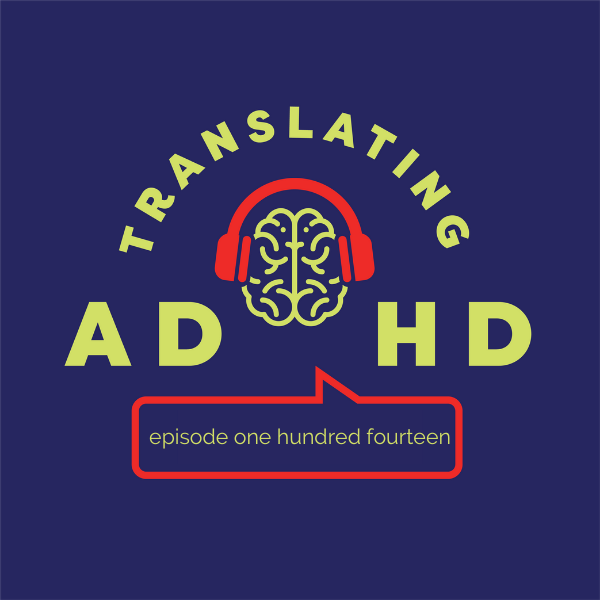
Emotional Modes with ADHD: Empathy
Shelly and Cam continue to explore emotions beyond ‘emotional dysregulation’ looking at a phenomenon they call emotional modes. Because of emotional variability and volatility, those with ADHD can be prone to ‘lock’ into a preferred emotional stance. They illustrate this autopilot approach by looking at how empathy tends to present in their own client population.
Cam shares how he sees two distinct polar presentations of empathy - too much empathy for others with zero empathy for self or zero empathy for others resulting in isolation and lack of connection. Shelly brings in a metaphor of a swinging pendulum to describe this empathy imbalance and how listeners can start to loosen the emotional lock down and let the pendulum swing to allow for empathy for self and empathy for others. The hosts pull concepts from earlier shows like ‘seeing oneself in the picture’ and the importance of developing a curious practice to further explore the dilemma.
Episode links + resources:
Join the Community | Become a Patron
Our Process: Understand, Own, Translate.
About Cam and Shelly
For more of the Translating ADHD podcast:
Episode Transcripts: visit TranslatingADHD.com and click on the episode
Follow us on Twitter: @TranslatingADHD
Visit the Website: TranslatingADHD.com
25:2907/02/2022
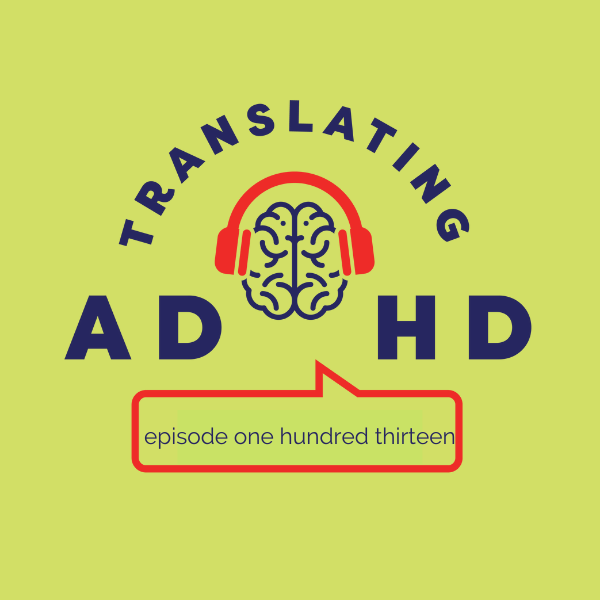
Cultivating Trust in Relationships with ADHD
Shelly and Cam continue their exploration of the connection between positive emotions and positive structures. This week they focus on supportive people and cultivating trust in a relationship. Shelly shares a story where a client’s definition of trust evolves as she navigates hardship, setbacks and trauma to eventual learning and change regarding a desire to help her community in need. Listen for the client’s own ‘translating’ work as she redefines what trust actually is for her.
In relationships, those of us with ADHD can lead with hope and intention, but without clear needs, agreements and active boundary work, we can find ourselves in the familiar territory of overextension, rejection and lost trust. Converting hard learning into new awareness can be a struggle, but in developing a reflective practice and accessing resources, one can move to a new place of awareness and engagement based on personal needs and values.
Episode links + resources:
Join the Community | Become a Patron
Our Process: Understand, Own, Translate.
About Cam and Shelly
For more of the Translating ADHD podcast:
Episode Transcripts: visit TranslatingADHD.com and click on the episode
Follow us on Twitter: @TranslatingADHD
Visit the Website: TranslatingADHD.com
22:4231/01/2022

Positive Emotions and Positive Structures with ADHD
As Shelly and Cam shift in the direction of the role of positive emotions in motivation and activation, they pause to consider the importance of positive structures. It’s almost impossible to embrace and utilize positive emotions like hope, curiosity and love if the signal of negative emotions, like anger or shame, is still too intense and if one has not considered positive emotions in the context of positive structures. Those of us with ADHD are masterful at responding and reacting to negative structures to create urgency and to activate an adrenaline/dopamine response. This approach comes at a great cost, though. As stress and anxiety build, our ability to utilize this consequence-based motivation system starts to diminish.
Positive structures are something Cam discovered in a state of burnout while teaching and again while building his coaching business. He realized that his fuel source of negative emotion and negative structures couldn’t propel him any farther. With little options, he turned to being curious about bigger contextual questions and his bigger Why. This is the land of values, needs and purpose. Cam realized important personal values of learning and education and that shifting to a positive mindset and utilizing positive emotions started with considering positive structures like core values and positive outcomes.
Episode links + resources:
Join the Community | Become a Patron
Our Process: Understand, Own, Translate.
About Cam and Shelly
For more of the Translating ADHD podcast:
Episode Transcripts: visit TranslatingADHD.com and click on the episode
Follow us on Twitter: @TranslatingADHD
Visit the Website: TranslatingADHD.com
25:1224/01/2022
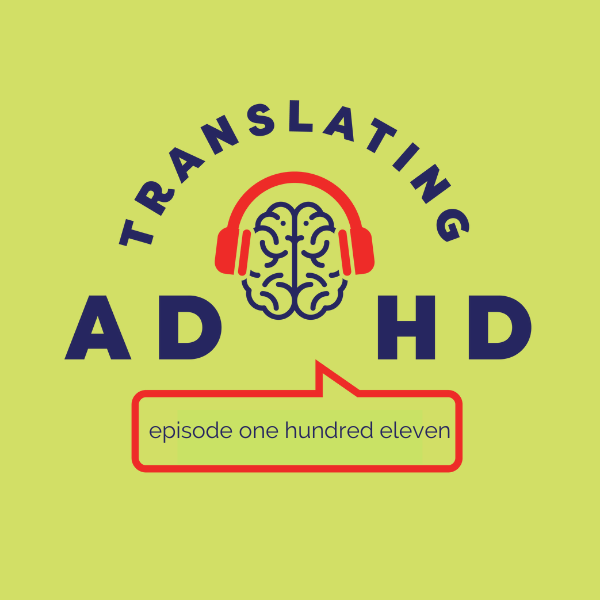
Opening the Door to Positive Emotions with ADHD
This week Cam and Shelly pivot from the recent focus on negative emotions to positive emotions. Emotions are the on-off switch for action. Understanding how emotions come into play is key to motivation and taking action. Those of us with ADHD tend to over-utilize our fear neural networks or negative emotions to get things done. How often do you hear yourself prioritizing or taking action through urgency or on the greatest consequence? How often does worry, fear or anxiety inform what you are trying to do?
Accessing this negative neural network too much leads to stress and health issues. Starting to access the positive neural network can help to reverse this process. Cam and Shelly start by introducing the ‘gateway’ emotions of hope and curiosity. These are the emotions that can lead to other positive emotions like trust, gratitude and love. Cam reads a letter from an appreciative listener and discusses how developing community and understanding of the dilemma can instill a sense of hope and possibility. Shelly discusses how the skill of normalizing can make someone start to understand their ADHD experience and why in coaching it is important to articulate a picture of positive success.
Episode links + resources:
Join the Community | Become a Patron
Our Process: Understand, Own, Translate.
About Cam and Shelly
For more of the Translating ADHD podcast:
Episode Transcripts: visit TranslatingADHD.com and click on the episode
Follow us on Twitter: @TranslatingADHD
Visit the Website: TranslatingADHD.com
24:1617/01/2022

Big Signal Emotions with ADHD: Rejection
This week we continue our exploration of big signal emotions as we explore rejection. Cam and Shelly discuss that with ADHD on board it’s not just rejection, but the fear of rejection that has the biggest impact.
Cam and Shelly discuss the relationship between fear and rejection and how rejection comes from a place of fear. To examine this more closely, Cam takes listeners back to a time in life when he felt rejected frequently despite the fact that he was not being rejected. Cam felt rejected at work because he was in a role where he struggled with things that his colleagues managed easily. He walks through his perceptions and emotional responses in this time period that lead to a feeling of rejection where no rejection existed. To contrast Cam’s story, Shelly introduces some examples of times in her life when she has experienced real rejection.
With ADHD on board, we often miss nuance and distinction. Using our contrasting examples of real and perceived rejection, we discuss how to distinguish between real and perceived rejection. We also discuss looking at the nuance to determine whether we are being wholly rejected and whether we want to be included in the place we are experiencing rejection.
Episode links + resources:
Join the Community | Become a Patron
Our Process: Understand, Own, Translate.
About Cam and Shelly
For more of the Translating ADHD podcast:
Episode Transcripts: visit TranslatingADHD.com and click on the episode
Follow us on Twitter: @TranslatingADHD
Visit the Website: TranslatingADHD.com
24:2110/01/2022
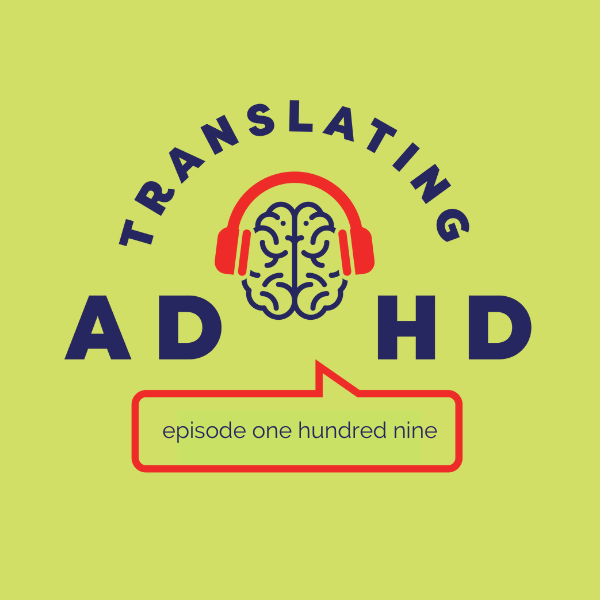
Big Signal Emotions with ADHD: Shame
This week we return to our exploration of big signal emotions as we dig into shame. Shame is no stranger for those of us living with ADHD. Shame is often the root of many downstream emotional responses, like imposter syndrome and rejection sensitivity. As one walks through the world with an invisible disability like ADHD, one can see how shame can manifest. Cam and Shelly discuss how years of dismissal and rejection, deliberate and not, and years of struggling to explain or account for the unexplainable, plant the seeds of shame. Cam and Shelly share how factors like isolation, fear and trauma will contribute to the development of shame and how ADHD and emotional dysregulation heighten a shame response.
The First Barrier of ADHD is the barrier to new awareness. Emotions like shame, and blame in a previous episode, can cloud our judgment, disrupt our own agency and take us offline down some negative emotional rabbit hole (or one of our Valley experiences). When we explore emotions in a safe and curious way, locate a supportive community and bring new language to our emotional experiences we can start to dissolve the effects of emotions like shame.
Episode links + resources:
Join the Community | Become a Patron
Our Process: Understand, Own, Translate.
About Cam and Shelly
For more of the Translating ADHD podcast:
Episode Transcripts: visit TranslatingADHD.com and click on the episode
Follow us on Twitter: @TranslatingADHD
Visit the Website: TranslatingADHD.com
27:3103/01/2022
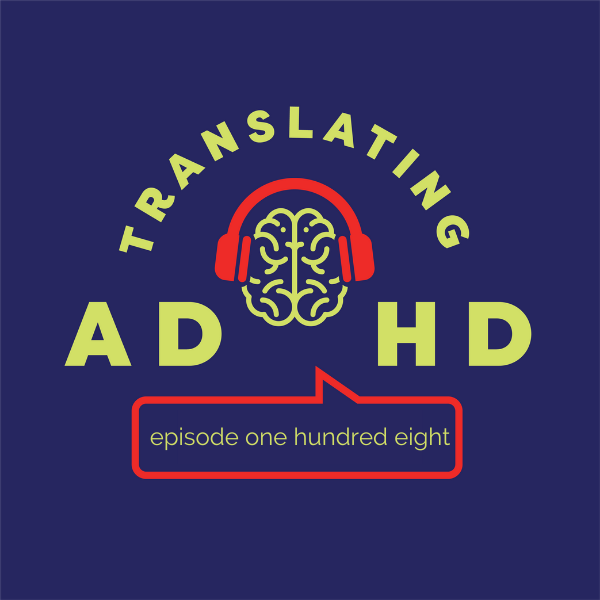
A Different Take on Emotional Dysregulation with ADHD
This week Shelly and Cam use a client story as a vehicle to explore emotion and emotional dysregulation. To have ADHD is to have challenges with managing appropriate and measured emotional responses. But that is not all. Emotion is key to the motivation system and developing new awareness and learning (All three barriers).
Cam and Shelly look at emotional dysregulation beyond the term and, in Translating ADHD fashion, dig into a client situation revealing language and dynamics that go far beyond a “failure to regulate”. Shelly shares in detail how her client located advocacy and agency from an emotionally charged interaction and found hope and change. She also shares how one can have strength and sensitivity in any given modality like visual, verbal or emotional.
Episode links + resources:
Join the Community | Become a Patron
Our Process: Understand, Own, Translate.
About Cam and Shelly
For more of the Translating ADHD podcast:
Episode Transcripts: visit TranslatingADHD.com and click on the episode
Follow us on Twitter: @TranslatingADHD
Visit the Website: TranslatingADHD.com
28:0927/12/2021
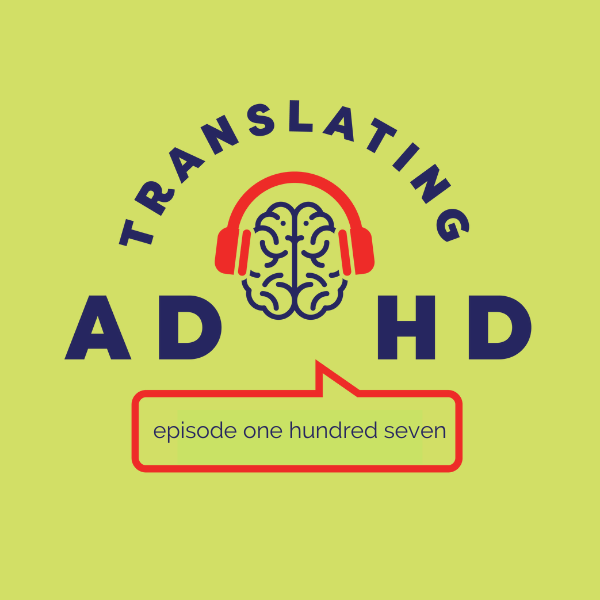
Big Signal Emotions with ADHD: Blame
Emotions are key to driving beliefs and behaviors. They also play a big part in effective ADHD management. Emotions also drive big signal responses like rejection, sensitivity or imposter syndrome. Those big signal responses can really impact our ability to identify and circumvent First Barrier dilemmas. The First Barrier of ADHD is the barrier to new awareness. Emotions like blame can cloud our judgment, disrupt our own agency and take us offline down some negative emotional rabbit holes (one of our Valley experiences).
Shelly and Cam look closely at blame, one emotion they see often in their new clients, and the habit of ‘blame sponging’ or taking up all of the blame in some circumstance or situation. Emotion rarely operates alone. Black and white thinking and not seeing oneself in the picture contribute to a phenomenon of assuming all of the blame or rejecting it out of hand.
Shelly and Cam share tools well known to long-time Translating ADHD listeners like curiosity and Pause Disrupt Pivot. Distinguishing our own stuff from others’ stuff and determining, through collaboration and communication, the ‘stuff in the middle’ gives us some traction with what once was a very slippery slope.
Episode links + resources:
Join the Community | Become a Patron
Our Process: Understand, Own, Translate.
About Cam and Shelly
For more of the Translating ADHD podcast:
Episode Transcripts: visit TranslatingADHD.com and click on the episode
Follow us on Twitter: @TranslatingADHD
Visit the Website: TranslatingADHD.com
30:4820/12/2021

Navigating the First Barrier of ADHD
Shelly and Cam revisit the First Barrier of ADHD - the barrier to new awareness - by illustrating a client’s own experience with struggling and eventually succeeding to generate new awareness. In Shelly’s words “to walk this world as an ADHD person is to walk this world misunderstood”. Because of the first barrier of ADHD, it can be extremely frustrating to know when we are struggling, and - when we do have this awareness, - it can be doubly hard to articulate our dilemmas to those around us.
In the client example, the individual moves through this process with vulnerability and curiosity seeking support from the people around him. He also faces the uncomfortable truth that he is not holding up his own rules for engagement. Instead of moving into shame, he does his own understand own translate work to get to a place of curiosity and agency. Notice the use of language the client shares in this episode. An eye-opening example of navigating the first barrier to new awareness.
Episode links + resources:
Join the Community | Become a Patron
Our Process: Understand, Own, Translate.
About Cam and Shelly
For more of the Translating ADHD podcast:
Episode Transcripts: visit TranslatingADHD.com and click on the episode
Follow us on Twitter: @TranslatingADHD
Visit the Website: TranslatingADHD.com
28:1513/12/2021
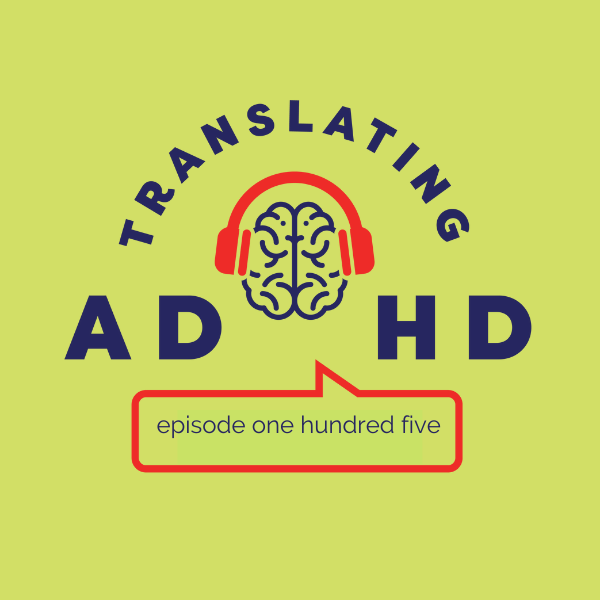
ADHD PoC Voices: Romanza McAllister LCSW Shares her Own Story and Discusses Challenges Facing People of Color with ADHD
This week we are delighted to present another special episode dedicated to exploring the lived experiences of people of color with ADHD by presenting an interview with coach and therapist Romanza McAllister LCSW.
Romanza is a trauma-informed psychotherapist and ADHD coach in New York City. She is a mental health advocate and very active in the leadership of ADDA.
In this episode, Romanza speaks about growing up and the challenge of being misunderstood, even gaslit, by those around her as she tried to understand her own neurodiverse brain. She converted her own personal challenge into her current empowerment model of helping those with ADHD in communities of color find their unique authentic voice and recognize and celebrate one’s intersectional identities.
Join us in this fascinating, inspiring and far-ranging discussion with Romanza McAllister.
Episode links + resources:
Join the Community | Become a Patron
Our Process: Understand, Own, Translate.
About Cam and Shelly
For more of the Translating ADHD podcast:
Episode Transcripts: visit TranslatingADHD.com and click on the episode
Follow us on Twitter: @TranslatingADHD
Visit the Website: TranslatingADHD.com
17:5706/12/2021

The First Barrier of ADHD
Why is it that we stray off the path we know - of best practices, best strategies and best resources? Why is it we struggle to recognize we have left the path and additionally, struggle to relocate the path once we have realized this? This challenge with generating valuable awareness at the right time is a signature ADHD dilemma and creates the biggest obstacle to meaningful change and even addressing our ADHD, including pursuing a diagnosis. This is the first barrier of ADHD - The barrier to new awareness.
Shelly and Cam discuss the first barrier and how it can manifest. Shelly recalls a story of Cam recently struggling with the first barrier and what he did to overcome it. This illustrates that the first barrier never goes away, but when we can anticipate the barrier with the 'pause, disrupt and pivot' process, we can navigate around it.
Episode links + resources:
Join the Community | Become a Patron
Our Process: Understand, Own, Translate.
About Cam and Shelly
For more of the Translating ADHD podcast:
Episode Transcripts: visit TranslatingADHD.com and click on the episode
Follow us on Twitter: @TranslatingADHD
Visit the Website: TranslatingADHD.com
30:5129/11/2021

Contextual Wiring and Your Unique Value with ADHD
Shelly and Cam continue with the ever-expansive topic of context with respect to ADHD with a deep dive into how our unique wiring is connected to our unique value at work and in the world. In this episode, they explore how contextual wiring presents in a few examples and how to leverage this ‘super strength’ throughout the week. They distinguish how big value is not the same as the big signal (episode 80). Our big value is often downplayed or dismissed because of societal norms and our own negative internal dialogue.
Shelly shares how vulnerability and integrity informed a choice to no longer ‘play small’ and step closer to her own compelling Why (episode 101). Finally, the hosts discuss how getting stuck in ‘ivory tower’ thinking can inhibit exploration and experimentation.
Episode links + resources:
Join the Community | Become a Patron
Our Process: Understand, Own, Translate.
About Cam and Shelly
For more of the Translating ADHD podcast:
Episode Transcripts: visit TranslatingADHD.com and click on the episode
Follow us on Twitter: @TranslatingADHD
Visit the Website: TranslatingADHD.com
28:4022/11/2021

Mindset and Shifting Context with ADHD
Shelly and Cam continue the theme of exploring context by introducing a process for shifting to a better mindset. Context informs our current narrative and our narrative informs our mindset or the way we perceive our world.
They share a simple three-step process of Pause, Disrupt, Pivot to shift from a negative context to a positive one. Shelly shares an excellent story of how she uses the process to interrupt a potential spiraling event and move to a better frame of mind. As they often do, Cam and Shelly share typical ADHD challenges around shifting context and leave listeners with a simple practice.
Episode links + resources:
Join the Community | Become a Patron
Our Process: Understand, Own, Translate.
About Cam and Shelly
For more of the Translating ADHD podcast:
Episode Transcripts: visit TranslatingADHD.com and click on the episode
Follow us on Twitter: @TranslatingADHD
Visit the Website: TranslatingADHD.com
27:4015/11/2021

Context and the Tone of Your ‘Why?’
Shelly and Cam stay on the topic of context but shift to its positive elements. They distinguish the value of ‘Who’ and ‘Why’ questions and how they inform the frame or context those of us with ADHD put around our experience. Both Shelly and Cam share how the tone of their own ‘Why’ questions early in their careers led to very different outward manifestations but similar feelings of frustration and confusion.
They then talk about how changing the tone of the ‘Why’ questions can open us up to curiosity, creativity and possibility. When we have a sense of who we are and how we show up in the world we can create agency and priority on the stuff that really matters.
Episode links + resources:
Join the Community | Become a Patron
Our Process: Understand, Own, Translate.
About Cam and Shelly
For more of the Translating ADHD podcast:
Episode Transcripts: visit TranslatingADHD.com and click on the episode
Follow us on Twitter: @TranslatingADHD
Visit the Website: TranslatingADHD.com
26:0408/11/2021

Context Pitfalls and ADHD
Shelly and Cam continue to explore contextual pitfalls and ADHD. Last week they introduced contextual mad-libs. This week they explore two more contextual challenges, ‘locking in’ to a limiting narrative and conversely ‘spinning through’ multiple narratives. Both are contextual in nature and a very ADHD Valley experience. We constantly tether to how we relate to our world, drawing frames of reference that meet a need that may be keeping us in a current state or mode and delay real and positive change.
ADHD is partially an ‘access and regulation’ dilemma; accessing and regulating attention, emotion, memory, energy, motivation and action. Our experience is a ‘Goldilocks’ experience of too little or too much. For example, our emotional experience is often one of too much emotion or not enough emotion. The same goes for creating meaning in our current moment - tethering to our current context. Cam shares two successive periods in his life when he experienced both the lock-in experience and the spinning experience.
For the lock-in, Cam shares how he fueled a ‘One Down’ perspective with a singular limiting story and the energy cost of keeping this ‘roadshow’ going. He then shares how he switched to the spinning version to rationalize a behavior and ‘play it safe’. This ‘channel switching’ is the situational rationalization we’ve discussed before.
Cam and Shelly share practices for listeners to bring the Keen Observer to these unique presentations of contextual pitfalls.
Episode links + resources:
Join the Community | Become a Patron
Our Process: Understand, Own, Translate.
About Cam and Shelly
For more of the Translating ADHD podcast:
Episode Transcripts: visit TranslatingADHD.com and click on the episode
Follow us on Twitter: @TranslatingADHD
Visit the Website: TranslatingADHD.com
23:3601/11/2021
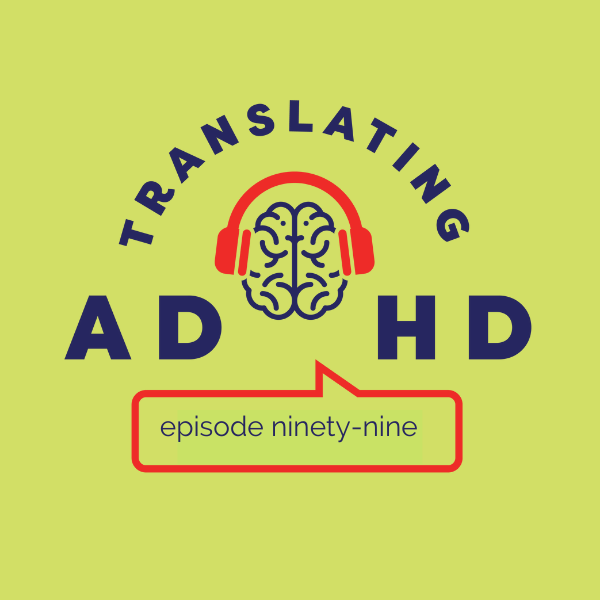
Contextual Mad-Libs and ADHD
Shelly and Cam continue to discuss the concept of context as it relates to coaching and to the lived experience with ADHD. We are wired for context and the compelling narratives that can drive behaviors good and bad. Today we delve into how being wired for context is not so helpful as Shelly shares a concept that one of her clients termed ‘contextual mad-libbing’ - where one inserts their own narrative and meaning into an incomplete context like a short text message or a rushed meeting in the hall where key bits of data are missing.
All brains add and subtract meaning to make what we are perceiving make sense. A brain cannot process every piece of information it senses, so it skips and subtracts and adds meaning. Those of us with ADHD can be susceptible to contextual mad-libs where we quickly add our own meaning when we don’t have the entire story. The practice of ongoing contextual mad-libbing can have the individual expend tremendous energy and precious bandwidth on something that may not even be relevant. Shelly shares how she worked with her client to break through the Third Barrier and maximize the learning from a past negative work experience to inform a new promising work experience. This coaching work helps to address ADHD issues like prospective memory, developing useful hindsight and forethought. Cam and Shelly leave listeners with a few exercises to bring the Keen Observer to this mad-lib phenomenon.
Episode links + resources:
Join the Community | Become a Patron
Our Process: Understand, Own, Translate.
About Cam and Shelly
For more of the Translating ADHD podcast:
Episode Transcripts: visit TranslatingADHD.com and click on the episode
Follow us on Twitter: @TranslatingADHD
Visit the Website: TranslatingADHD.com
25:2725/10/2021
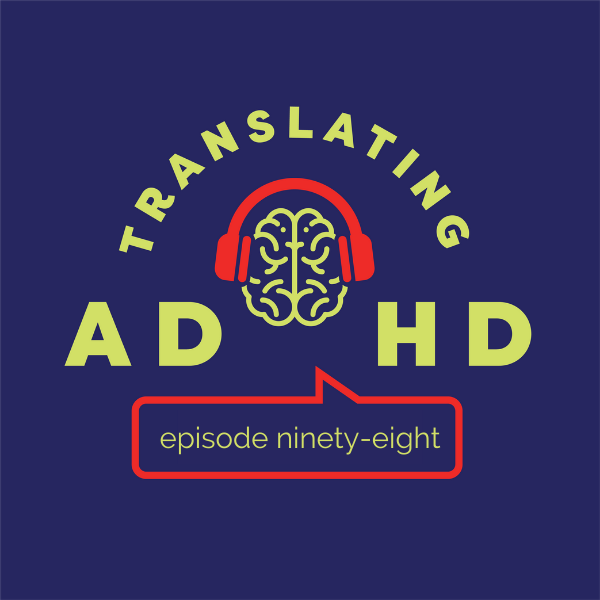
ADHD, Coaching and Context
Shelly and Cam bring forth a topic that is synonymous with coaching and the ADHD lived experience but rarely, if ever, discussed overtly in ADHD circles. Context drives so much of the coaching conversation from discovering big agendas to exploring limiting perspectives, yet we often don’t recognize when context is at work influencing our thoughts and behaviors.
Shelly and Cam define context and how it is of particular interest to those of us with ADHD. Part of the neurodiverse experience is in part because many of us are ‘wired for context’ - that we process by our relative relation to our world in a particular moment. The neurotypical population is wired more for outcome, sequence or process - wired more for time. Our preference for context has us lead with curious ‘Why’ questions rather than conventional ‘What’ and ‘When’ goal-oriented questions. They share numerous examples of how context comes into play in coaching relationships and how context can be a powerful ally or a formidable obstacle.
Episode links + resources:
Join the Community | Become a Patron
Our Process: Understand, Own, Translate.
About Cam and Shelly
For more of the Translating ADHD podcast:
Episode Transcripts: visit TranslatingADHD.com and click on the episode
Follow us on Twitter: @TranslatingADHD
Visit the Website: TranslatingADHD.com
29:2918/10/2021
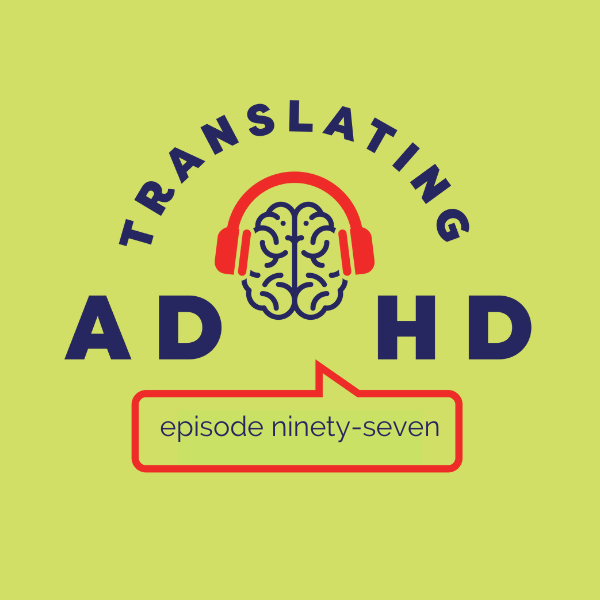
Navigating The Three Barriers with ADHD
Shelly and Cam do what they do best, taking listeners on a journey through an ADHD-lived experience. Today they integrate all three barriers of ADHD as Shelly shares her own discovery and learning process. She digs into a recent dilemma around a breakdown with getting house chores done. Listen as Shelly and Cam explore Shelly’s journey as she bumps into and then develops workarounds for all three barriers, to new learning that she converts into new action resulting in systems and practices that reflect her current reality - the captain of her own abode.
The Three Barriers are as follows:
The First Barrier to Awareness
The Second Barrier to Informed Action
The Third Barrier to Learning
Episode links + resources:
Join the Community | Become a Patron
Our Process: Understand, Own, Translate.
About Cam and Shelly
For more of the Translating ADHD podcast:
Episode Transcripts: visit TranslatingADHD.com and click on the episode
Follow us on Twitter: @TranslatingADHD
Visit the Website: TranslatingADHD.com
35:2711/10/2021

The Third Barrier of ADHD
Shelly and Cam look at learning and its role in creating positive and sustained change. Deemed The Third Barrier of ADHD, learning is the most significant element of a change process and the one most impacted by ADHD. In ADHD land so much focus is put on the first two barriers - knowing what to do and doing what you know - that many miss this third and so essential step in moving one's agenda forward. Learning is key to our higher level TA concepts of agency, integrity (doing what matters) and living a life of purpose.
They distinguish learning as ‘the awareness on the backside of action’, connect it to the reflective practice we have alluded to in previous episodes and discuss the dilemma of how our own internal judgements cloud our past experiences (like walking through a house of mirrors). Of course Shelly and Cam share their own experiences and client experiences to illustrate the third barrier.
Episode links + resources:
Join the Community | Become a Patron
Our Process: Understand, Own, Translate.
About Cam and Shelly
For more of the Translating ADHD podcast:
Episode Transcripts: visit TranslatingADHD.com and click on the episode
Follow us on Twitter: @TranslatingADHD
Visit the Website: TranslatingADHD.com
28:4904/10/2021
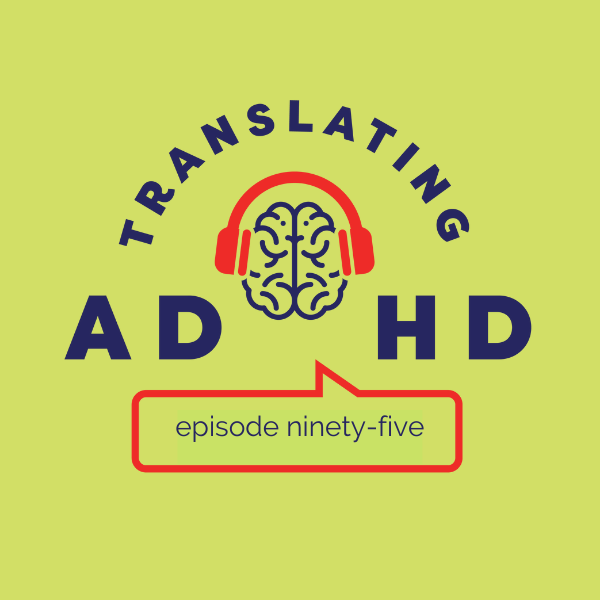
Self-Care and ADHD
Surprisingly, this is the first episode dedicated to the topic of self-care. Shelly and Cam discuss self-care in the context of the coaching process. They discuss why they start with self-care in every coaching engagement. Clients often come to coaching looking for a quick win but they're often seeking that win from an urgent state of mind or in an ARC perspective.
Shelly and Cam go on to discuss certain obstacles to self-care including “shoulds”, getting hung up in the “how”, diminishing or downplaying the value of a self-care practice and attaching extra meaning to the activity. Shelly shares an example of a client who put too much pressure on her own self-care practice but through her own reflective practice recognized the pressure and shifted the way she approached the self-care activity.
Episode links + resources:
Join the Community | Become a Patron
Our Process: Understand, Own, Translate.
About Cam and Shelly
For more of the Translating ADHD podcast:
Episode Transcripts: visit TranslatingADHD.com and click on the episode
Follow us on Twitter: @TranslatingADHD
Visit the Website: TranslatingADHD.com
29:1627/09/2021
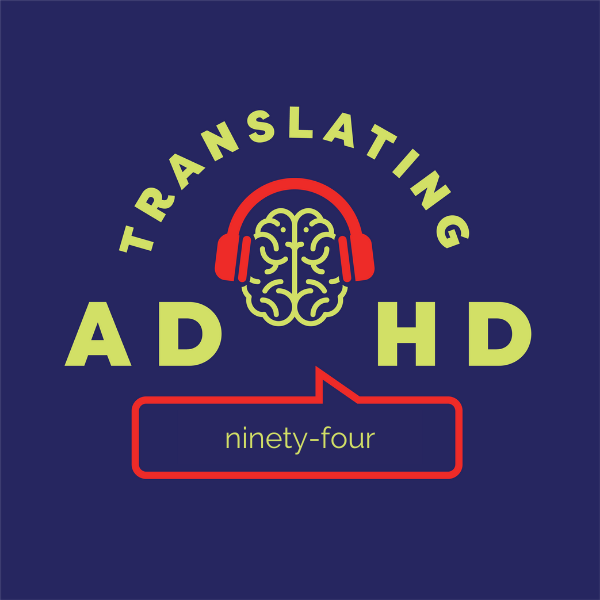
The Second Barrier of ADHD
Shelly and Cam pick up a thread from a past client conversation who was shifting from a knowing place to a place of action. Shelly shares more about her client in an active state of ‘cultivating safety’. This is significant because it is an excellent example of breaking through the ‘Second Barrier of ADHD’ - the first barrier is to new awareness, the second barrier is to new action and new behaviors. The Second Barrier is ubiquitous with the ADHD experience and likely the most maddening aspect of living with ADHD - we don’t do what we know we ought to do.
This far reaching discussion explores the significance of being the ‘captain of your own ship’ and moving to a place of resilience around receiving feedback and choice on our own terms. Information about ADHD is varied in its accuracy and too plentiful. In our “One Down” position we can feel like we are not in a position to discern information, accepting some and rejecting the rest. Being at choice with feedback or advice is a key element of breaking through the Second Barrier of ADHD.
Episode links + resources:
Join the Community | Become a Patron
Our Process: Understand, Own, Translate.
About Cam and Shelly
For more of the Translating ADHD podcast:
Episode Transcripts: visit TranslatingADHD.com and click on the episode
Follow us on Twitter: @TranslatingADHD
Visit the Website: TranslatingADHD.com
32:3620/09/2021
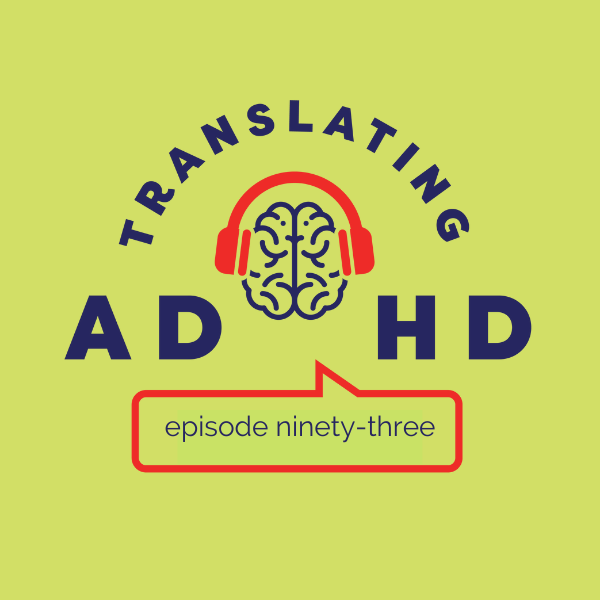
Enduring Covid Stressors with ADHD
Continuing the theme of resilience, Shelly and Cam revisit COVID as a topic, discussing the stress of living with an ongoing pandemic. They share personal stories and stories from clients and how the current uncertainty in daily life creates additional stressors. Building effective resilience is about identifying and managing stressors, distinguishing what we can and can not control.
With ADHD we can diminish or downplay negative inputs and just try to ‘soldier on’. Acknowledging the stress and impact is a first step in processing feelings and moving through their Understand, Own, Translate process. Shelly and Cam share the SCARF model from David Rock as a useful tool.
Episode links + resources:
Join the Community | Become a Patron
Our Process: Understand, Own, Translate.
About Cam and Shelly
For more of the Translating ADHD podcast:
Episode Transcripts: visit TranslatingADHD.com and click on the episode
Follow us on Twitter: @TranslatingADHD
Visit the Website: TranslatingADHD.com
26:5113/09/2021
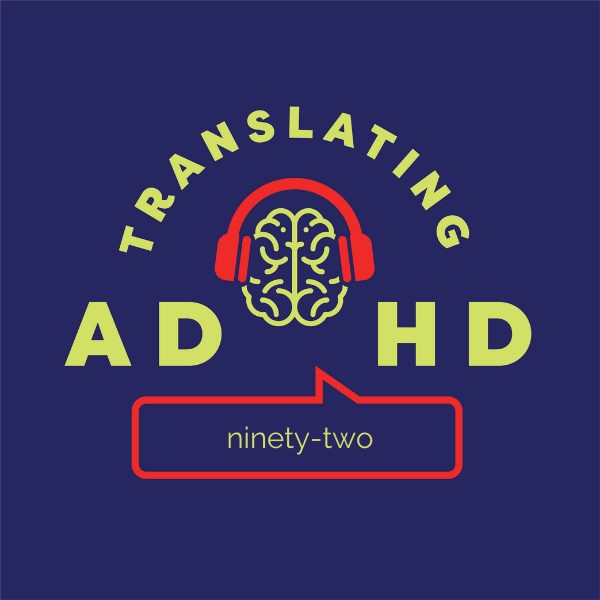
Resilience and Building a Reflective Practice with ADHD
Hosts Shelly and Cam continue down the road of resilience with a focus on developing a reflective practice. A reflective practice is a key element of coaching and an absolute linchpin in the action/learning process. Research in neuroscience and meditation shows the benefits of cultivating a reflective practice. The population as a whole under-utilizes this practice and those of us with ADHD can really struggle in developing a consistent reflective practice.
We introduce the idea of The Keen Observer, the objective partner to explore and reflect on experiences, thoughts, feelings and how we make meaning and form new beliefs. Cam and Shelly share simple practices to access this powerful resource and Shelly shares a client story where a reflective practice reveals not only a limiting belief but also a break through moment to a new opportunity.
Exercises for both Fast Brainers and Big Brainers are included with our new emphasis focusing on practical application of the concepts introduced in each episode.
Episode links + resources:
Join the Community | Become a Patron
Our Process: Understand, Own, Translate.
About Cam and Shelly
For more of the Translating ADHD podcast:
Episode Transcripts: visit TranslatingADHD.com and click on the episode
Follow us on Twitter: @TranslatingADHD
Visit the Website: TranslatingADHD.com
33:4606/09/2021
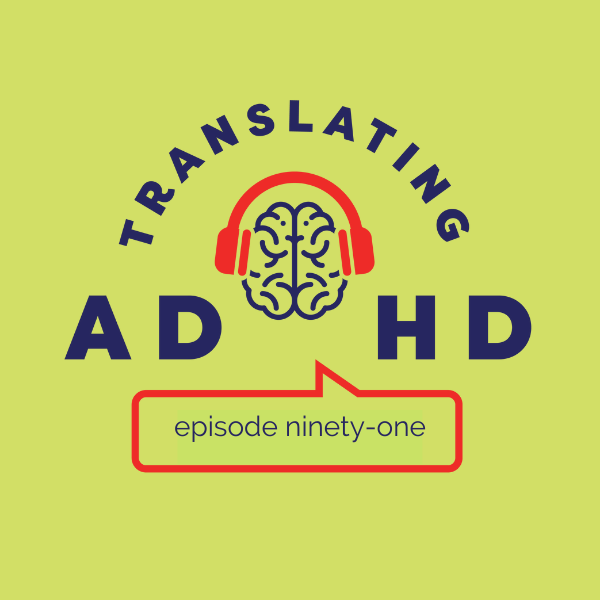
Resilience Practices with ADHD
Hosts Shelly and Cam continue to explore the concept of resilience and focus on resilience practices. Episode 60 laid out the ‘valley’ experience - getting stuck and not finding a way out. In today’s episode we explore practices to manage those valley moments. We share more examples of challenges when we are ‘deep in the emotion of an event’ like ‘blame sponge’ and our old friend from Episode 4, Adrenaline Response Cycle.
Cam shares a humorous “brain under assault” story and Shelly does a little spot coaching to reveal how Cam used resilience practices to help him manage the stressors. Other concepts and practices to manage valley moments discussed include body awareness, elements of Cam’s Emotional Health Ladder, the power of a reflective practice and Cam and Shelly’s own Triple 10 Ascending practice and Disrupt, Pivot, Activate, Explore sequence.
Emotional Health Ladder Levels (Episode 78):
Level 1 Present and Calm
Level 2 Attending to…
Level 3 Auto-pilot
Level 4 Survival
Level 5 Delusional
Episode links + resources:
Join the Community | Become a Patron
Our Process: Understand, Own, Translate.
About Cam and Shelly
For more of the Translating ADHD podcast:
Episode Transcripts: visit TranslatingADHD.com and click on the episode
Follow us on Twitter: @TranslatingADHD
Visit the Website: TranslatingADHD.com
31:4530/08/2021
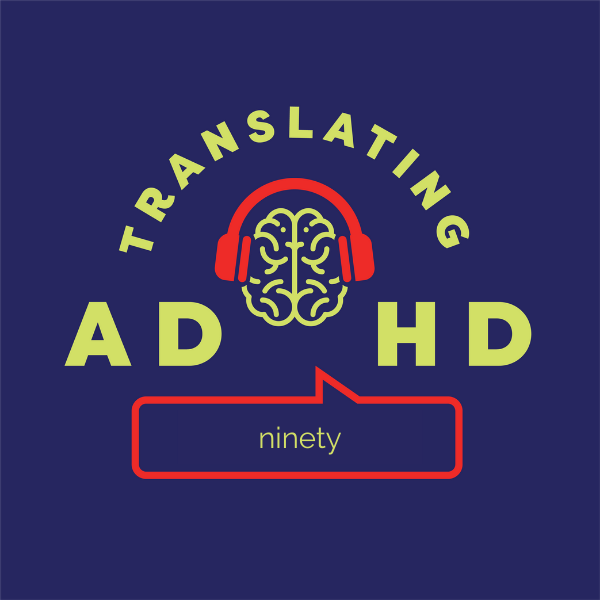
Reframing Resilience, Support and Practice with ADHD
Shelly and Cam kick off the second season of the Translating ADHD podcast! In this episode, we lay out what listeners can expect in the next 90 episodes. We reflect on our biggest learnings getting a 20,000ft. view of the podcast and review what our audience is wanting to see more of in each episode.
One request from our listeners is to have more examples of live coaching. Another is for us to provide listeners with more insight into how they can practice the concepts presented in the show in the "other 167 hours in the week".
Shelly and Cam roll out a format that not only informs the podcast but also the Discord community and their group coaching efforts. The format revolves around the concepts of Resilience, Self-Care, Agency, Project X and Purpose.
These are the core elements that inform Shelly and Cam’s coaching work with our individual and group coaching clients. We will still look at common ADHD topics like time and distractibility but through the context of these five cornerstones for living a life that fits.
Episode links + resources:
Join the Community | Become a Patron
Our Process: Understand, Own, Translate.
About Cam and Shelly
For more of the Translating ADHD podcast:
Episode Transcripts: visit TranslatingADHD.com and click on the episode
Follow us on Twitter: @TranslatingADHD
Visit the Website: TranslatingADHD.com
21:3523/08/2021
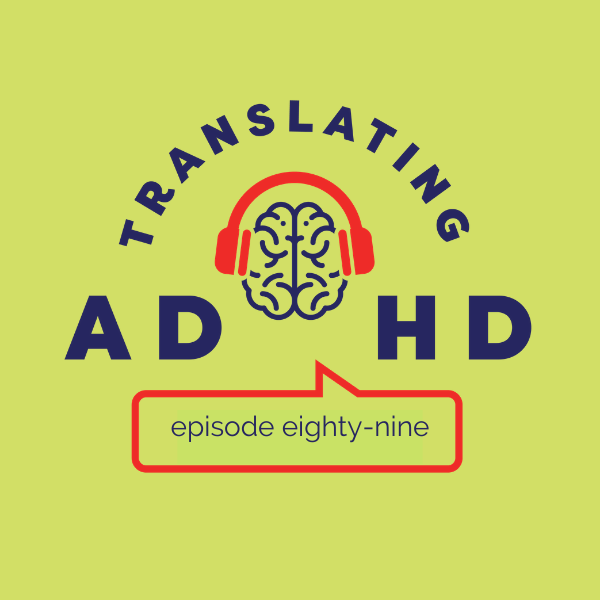
Reflecting on the Translating ADHD Journey and What's Next for The Show
This week, Cam and Shelly take some time to reflect on their journey in creating and producing the Translating ADHD podcast. We take some time to reflect on where we started, how we've grown, and what we've learned so far after 89 episodes of Translating ADHD.
We also discuss what we're considering in the future, and how we plan to use our six week summer break. We examine ways in which we are considering evolving Translating ADHD as a show and discuss how strengthening engagement with our amazing community as a primary goal.
Episode links + resources:
Join the Community | Become a Patron
Our Process: Understand, Own, Translate.
About Cam and Shelly
For more of the Translating ADHD podcast:
Episode Transcripts: visit TranslatingADHD.com and click on the episode
Follow us on Twitter: @TranslatingADHD
Visit the Website: TranslatingADHD.com
22:3405/07/2021
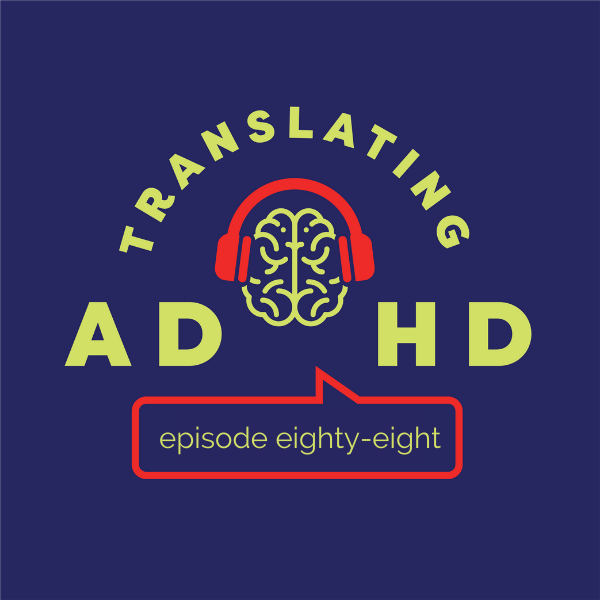
ADHD PoC Voices: Kofi Obeng Shares his Journey as a Black Man with ADHD and his Advocacy Work
This week we are delighted to present another special episode dedicated to exploring the lived experiences of people of color with ADHD by presenting an interview with ADHD Advocate Kofi Obeng.
Kofi is a mechanical engineer who lives in South Carolina. He was diagnosed with ADHD in the early 2000s. He is a father of sons with ADHD and has become very involved with the ADHD community. He is a co-facilitator of the African American/Black Diaspora ADHD Group at ADDA. ADDA supports adults with ADHD.
Join Cam in exploring Kofi’s own journey in discovering his own ADHD in college and how he has leveraged his knowledge to help his own children and the greater PoC ADHD community.
Episode links + resources:
Kofi’s Bio at ADDA
ADHD Parent Advocate Rhashidah Perry Jones Interview
ADHD Coach Inger Shaye Colzie Interview
Join the Community | Become a Patron
Our Process: Understand, Own, Translate.
About Cam and Shelly
For more of the Translating ADHD podcast:
Episode Transcripts: visit TranslatingADHD.com and click on the episode
Follow us on Twitter: @TranslatingADHD
Visit the Website: TranslatingADHD.com
31:1328/06/2021

Disclosing ADHD
One of the biggest dilemmas we face in our professional lives as ADHD people is the when, what, and how of disclosing our ADHD. Through client examples and years of experience, Shelly and Cam discuss the opportunities and pitfalls of ADHD disclosure.
The hosts focus on the rich middle ground between ‘share everything’ and ‘share nothing’ and how the Understand, Own, Translate work listeners are doing can be an effective resource. Cam and Shelly talk about the preconceived notions neurotypicals can have about the term ADHD. They also discuss how to share ADHD challenges in a way to promote connection and ‘conversation starters’ versus ‘conversation stoppers’.
Episode links + resources:
Join the Community | Become a Patron
Our Process: Understand, Own, Translate.
About Cam and Shelly
For more of the Translating ADHD podcast:
Episode Transcripts: visit TranslatingADHD.com and click on the episode
Follow us on Twitter: @TranslatingADHD
Visit the Website: TranslatingADHD.com
19:2921/06/2021
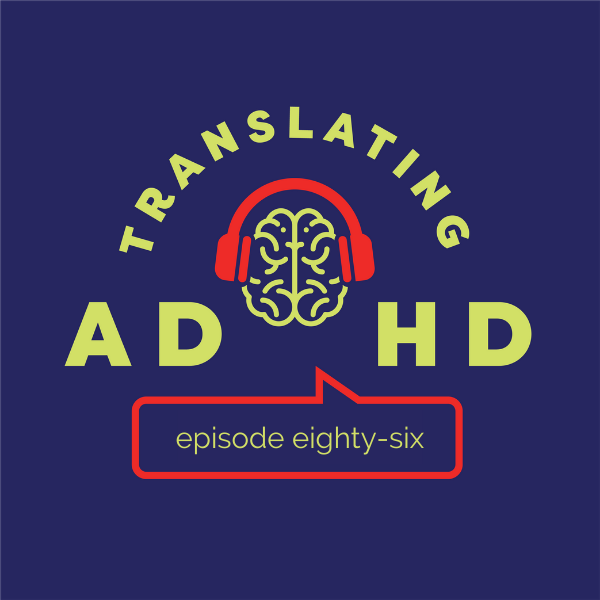
Navigating Romantic Relationships with ADHD
Romantic relationships can present tremendous challenges with ADHD in the equation. Romantic relationships produce big, intense signals that can block out other things. This is especially true because of the emotional investment that comes with a romantic relationship and the emotional dysregulation that comes with ADHD.
Shelly and Cam continue their discussion on ‘seeing oneself in the picture’ as they explore romantic relationships. We delve into how developing a healthy, meaningful, complimentary relationship with ADHD in the mix largely lives in Quadrant 2 (important, but not urgent). We also discuss how success is largely connected to the state of one's primary relationship and the impact that the state of a primary relationship has on the work we do with our clients and advocate for in the podcast.
Episode links + resources:
Join the Community | Become a Patron
Our Process: Understand, Own, Translate.
About Cam and Shelly
For more of the Translating ADHD podcast:
Episode Transcripts: visit TranslatingADHD.com and click on the episode
Follow us on Twitter: @TranslatingADHD
Visit the Website: TranslatingADHD.com
26:3114/06/2021
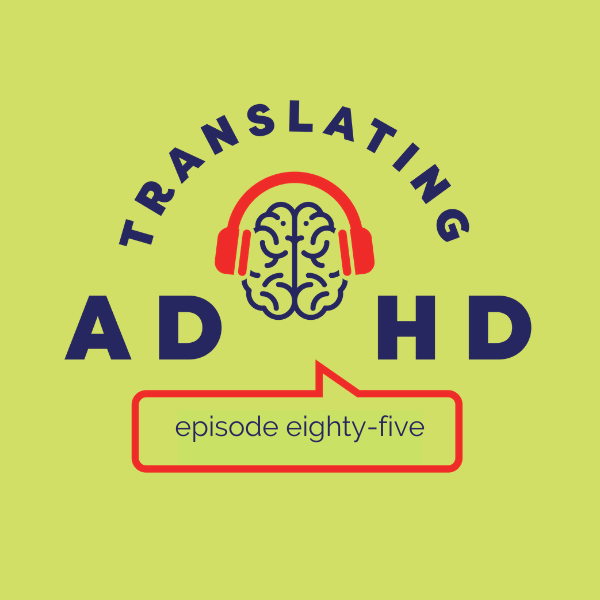
Managing Personal Relationships with ADHD
Personal relationships can often be more challenging than professional relationships with ADHD in the mix. Just remove all of the work related structures like role, goal and objective and add elements like emotional investment and historical baggage and watch out!
Shelly and Cam continue their discussion on ‘seeing oneself in the picture’ as they explore personal relationships - typical personas like rescuer or bulldozer, common pitfalls like over extension or ‘making up for’ behavior and strategies to develop new understanding and exercise choice. They continue to delve into the significance of concepts like expectations, needs and developing better personal boundaries. Finally, they look at the common challenges when neurodiverse individuals try to navigate relationships with neurotypicals.
Episode links + resources:
Join the Community | Become a Patron
Our Process: Understand, Own, Translate.
About Cam and Shelly
For more of the Translating ADHD podcast:
Episode Transcripts: visit TranslatingADHD.com and click on the episode
Follow us on Twitter: @TranslatingADHD
Visit the Website: TranslatingADHD.com
30:1207/06/2021
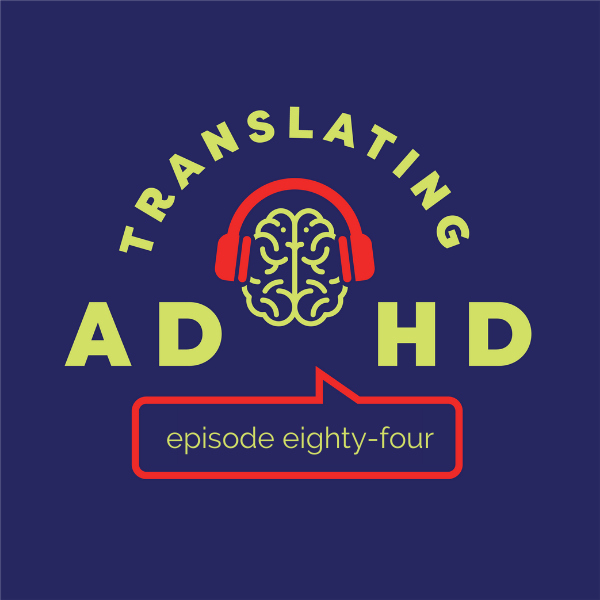
Managing Professional Relationships with ADHD
Continuing their discussion on agency and advocacy, Shelly and Cam tackle the all important area of managing professional relationships. The workplace is where translating opportunities and challenges will be ever present. In this episode, Shelly and Cam share a number of client stories as they highlight the significance of setting clear agreements, managing expectations and addressing needs.
They continue the ‘seeing self in the picture’ concept with more of a focus on the picture part - is what is being asked reasonable or even feasible? The discuss the challenges of negotiating from a perceived ‘one-down’ mindset many of us with ADHD experience. Finally, Cam and Shelly introduce the phenomenon of a gap between one’s internal dialogue and their external behaviors - the pitfalls and opportunities presented here.
Episode links + resources:
Join the Community | Become a Patron
Our Process: Understand, Own, Translate.
About Cam and Shelly
For more of the Translating ADHD podcast:
Episode Transcripts: visit TranslatingADHD.com and click on the episode
Follow us on Twitter: @TranslatingADHD
Visit the Website: TranslatingADHD.com
26:3531/05/2021
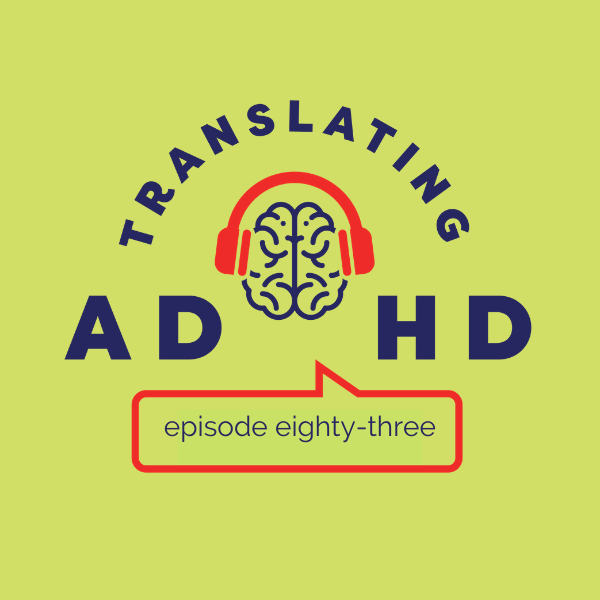
Defining Your Roles and Knowing Your Value with ADHD
This week, Shelly and Cam continue their discussion on "seeing yourself in your picture" and the broader concepts of agency and advocacy. In this episode they focus on role definition and value creation. As divergent thinkers we can believe that we need to cast a broader net when it comes to roles and value. Shelly and Cam make the case for limiting scope here.
Shelly introduces the coaching skill of co-creating and how anyone can use this skill to further define role and value in everyday conversations reintroducing terms like needs, expectations and boundaries.
Both bring examples of client scenarios to further illustrate this skillset.
Episode links + resources:
Join the Community | Become a Patron
Our Process: Understand, Own, Translate.
About Cam and Shelly
For more of the Translating ADHD podcast:
Episode Transcripts: visit TranslatingADHD.com and click on the episode
Follow us on Twitter: @TranslatingADHD
Visit the Website: TranslatingADHD.com
26:3524/05/2021
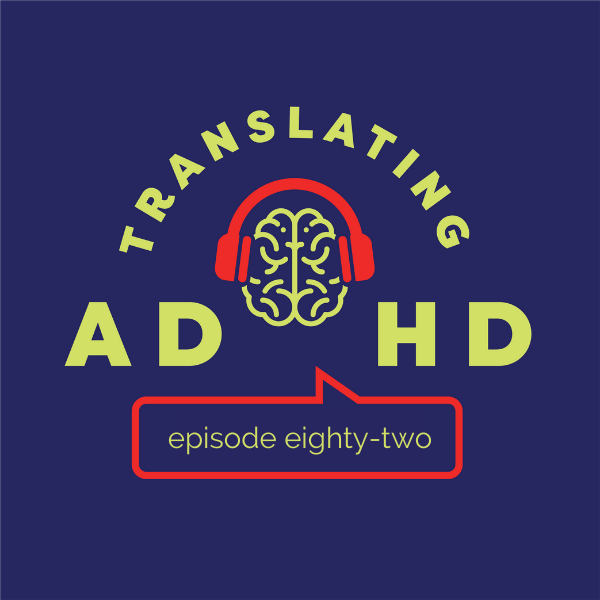
Putting Yourself in the Picture: Agency and Advocacy with ADHD
As ADHD people, we can be so focused on the biggest signals that we lose ourselves in our own pictures. This week on the Translating ADHD podcast, Cam and Shelly pivot to introduce a new concept of agency and advocacy that will inform the next several episodes from articulating needs in relationships to whether to disclose your ADHD at your workplace.
The definition of agency we introduce is the social science definition that includes acting independently and exercising free choice. Often there are two camps when it comes to navigating conventional (and neurotypical) societal norms - to reject them wholeheartedly or to attempt to assimilate fully. We see agency as a path to navigate a rich middle ground.
Cam and Shelly also discuss their upcoming group coaching class Navigating the Lunch Counter and Cam shares a story of deliberately losing his executive functioning in the middle of the produce section of Wegmans Grocery.
Episode links + resources:
Join the Community | Become a Patron
Our Process: Understand, Own, Translate.
About Cam and Shelly
For more of the Translating ADHD podcast:
Episode Transcripts: visit TranslatingADHD.com and click on the episode
Follow us on Twitter: @TranslatingADHD
Visit the Website: TranslatingADHD.com
27:2317/05/2021





